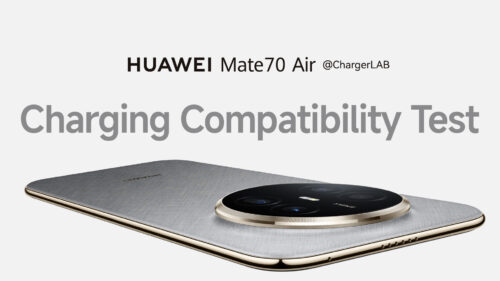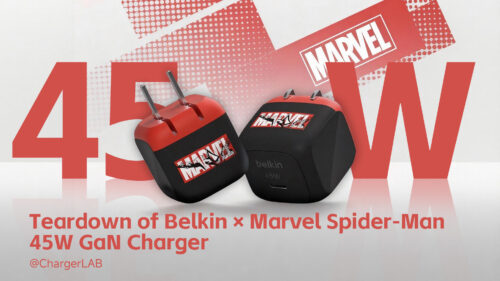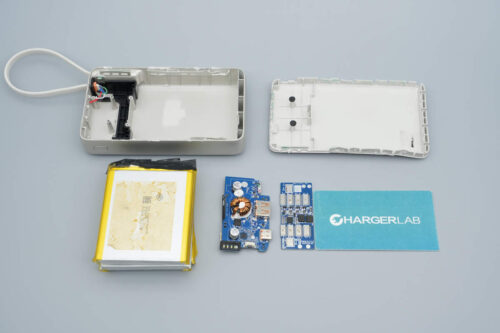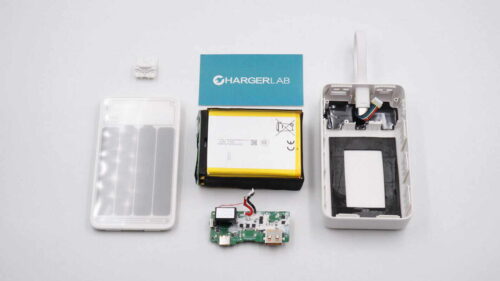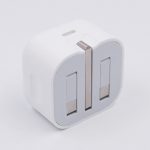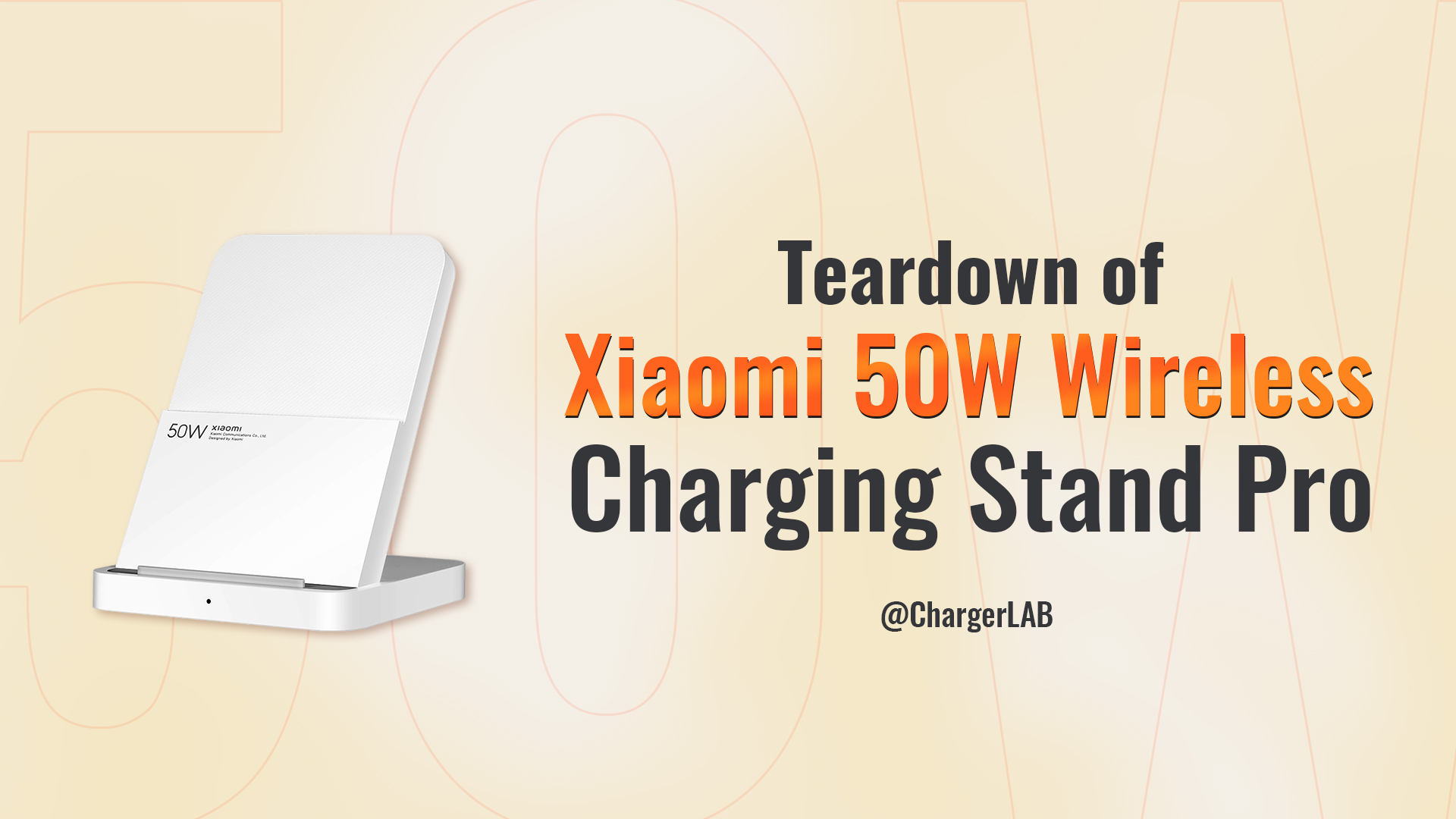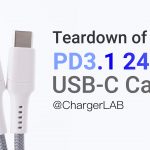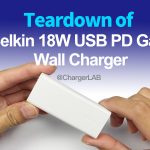Introduction
Last month, Huawei launched the P60 series of camera flagship smartphones, among which the P60 Pro and P60 Art models have been upgraded to 88W supercharge. Huawei also released a 88W 2-in-1 charger, which adopts USB-A or USB-C fusion port design and supports 88w supercharge and 65W PD output, as well as UFCS protocol.
This fusion port can cater to users who use traditional USB-A to USB-C cables, as well as those who want to fast charge their phones and computers using the dual USB-C cable that comes with it. So let's go ahead and take it apart to see its internal comonents and structure.
Product Appearance
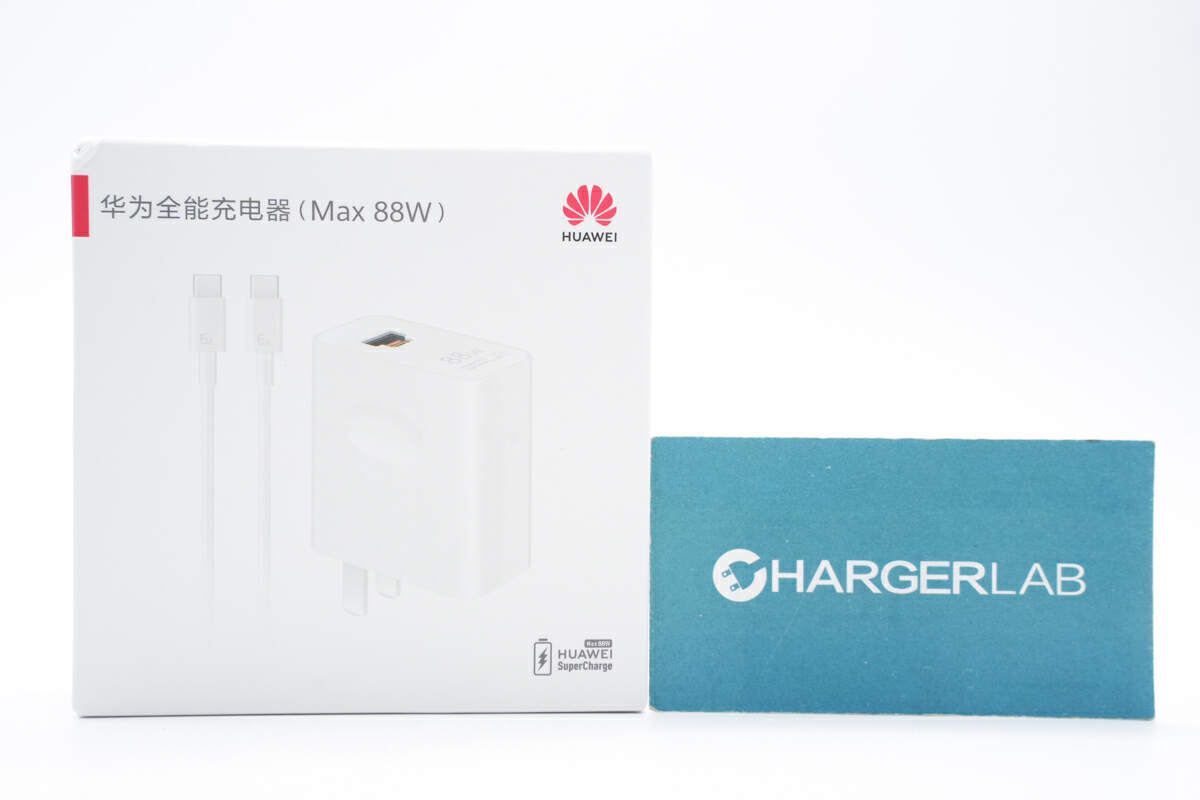
The packaging box adopts a classic Huawei dsign with its logo and product name printed on the front.
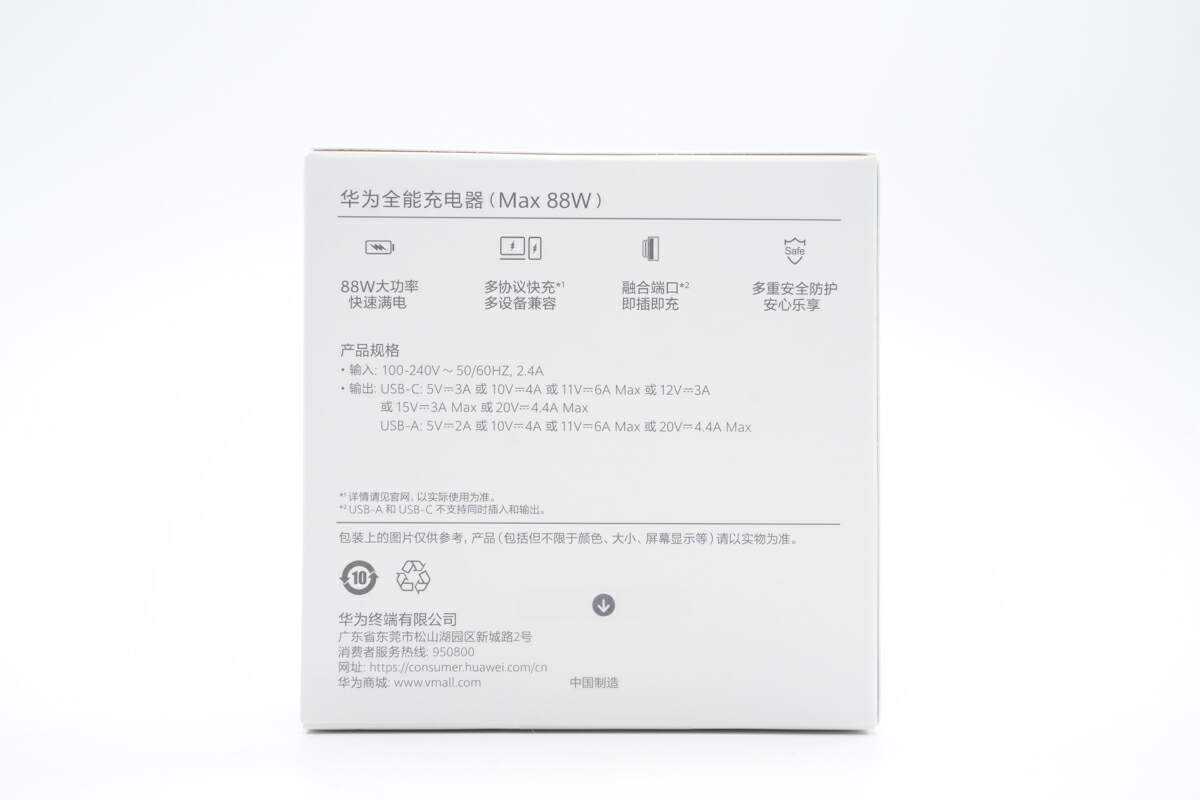
Four major selling points and specs info are located on the back.
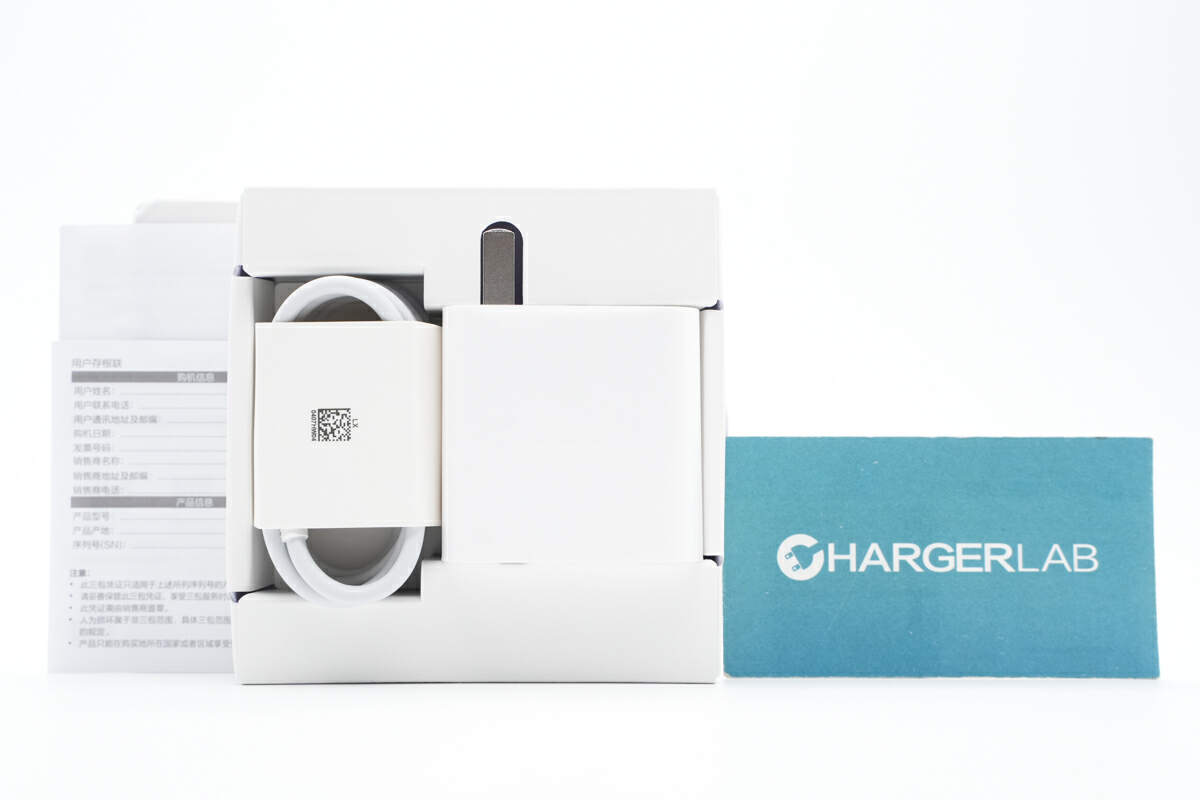
Open the box, except for the charger itself, it also comes with a charging cable and some documents.
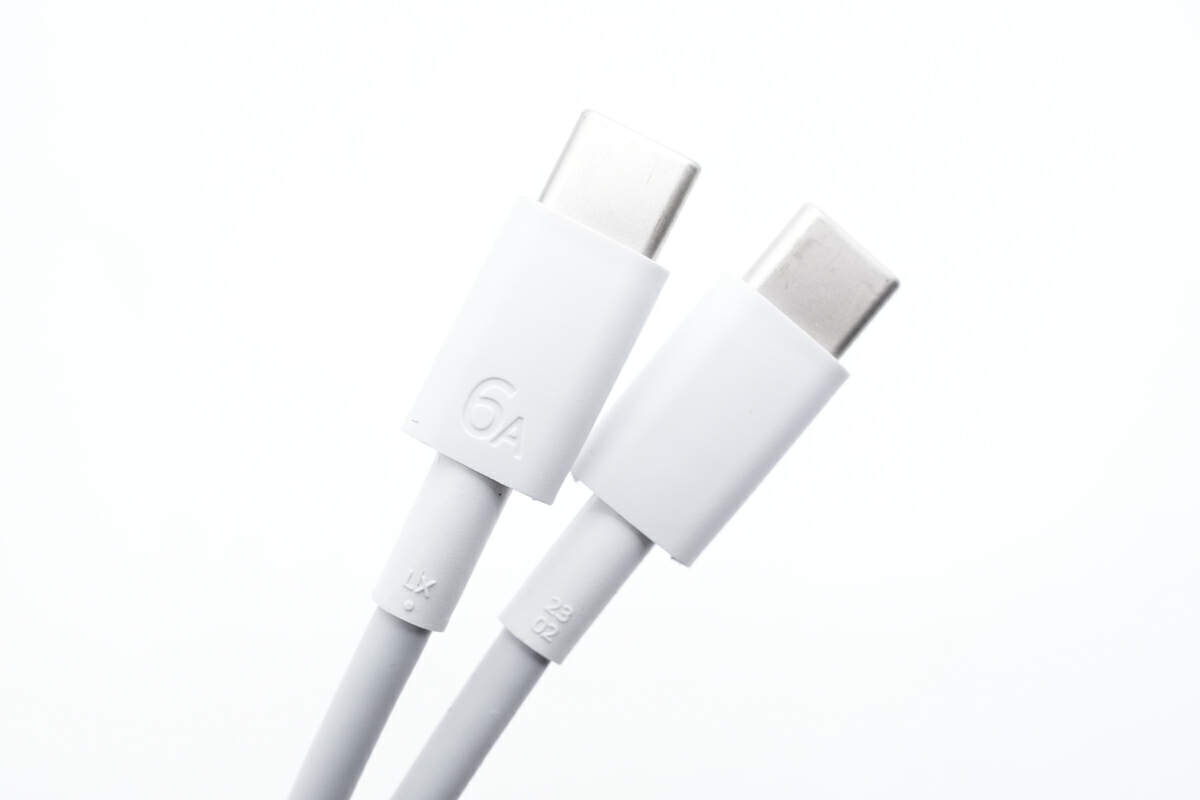
The "6A" on the connector means it supports up to 6A.
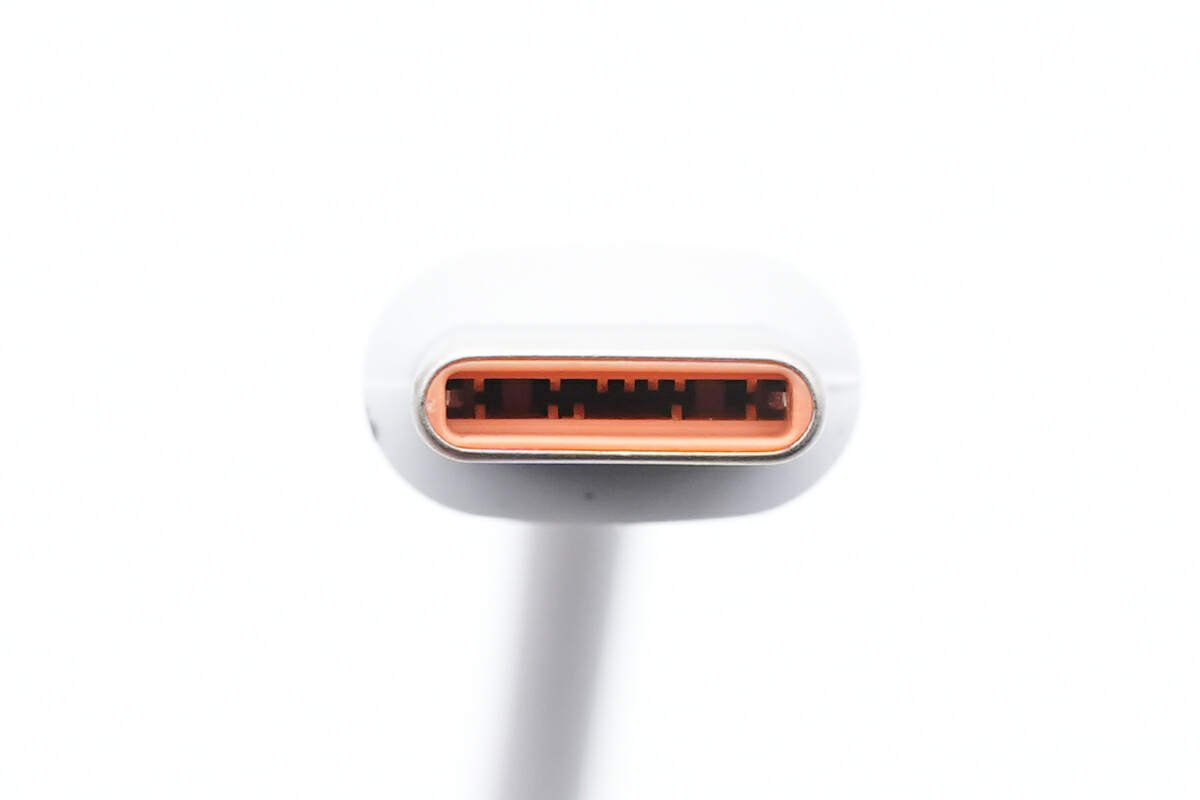
And the orange USB-C connector adopts a "full-pin" design.
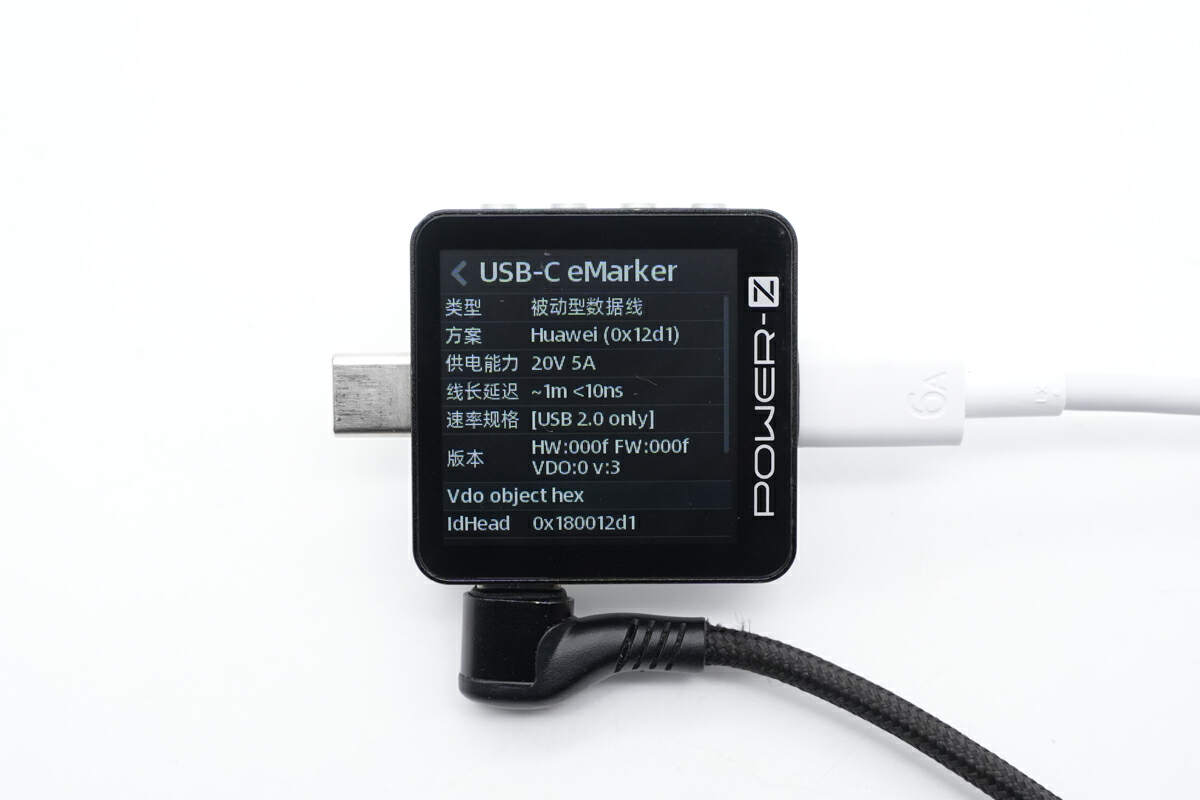
The ChargerLAB POWER-Z KM003C shows this cable integrates an E-Marker chip and supports 20V5A 100W PD fast charging, but it only supports USB 2.0.
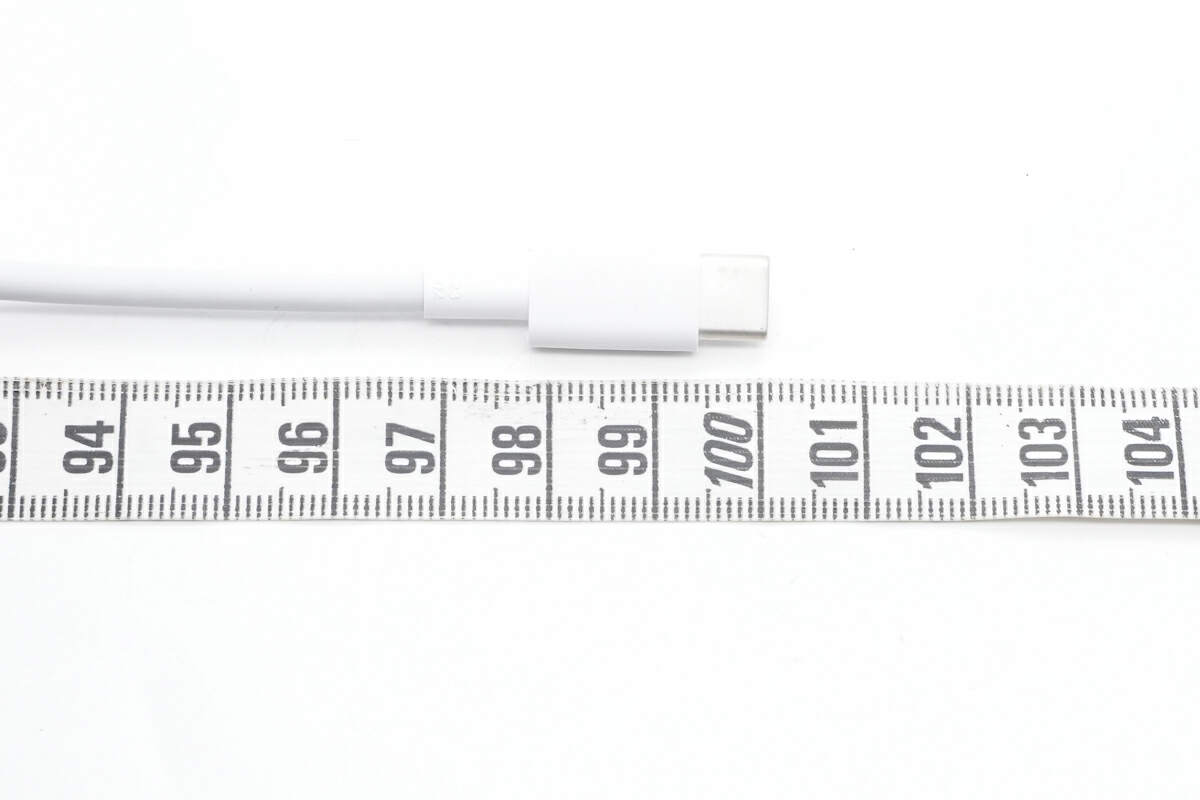
And the length of this cable is about 1m (3’ 3.37”).
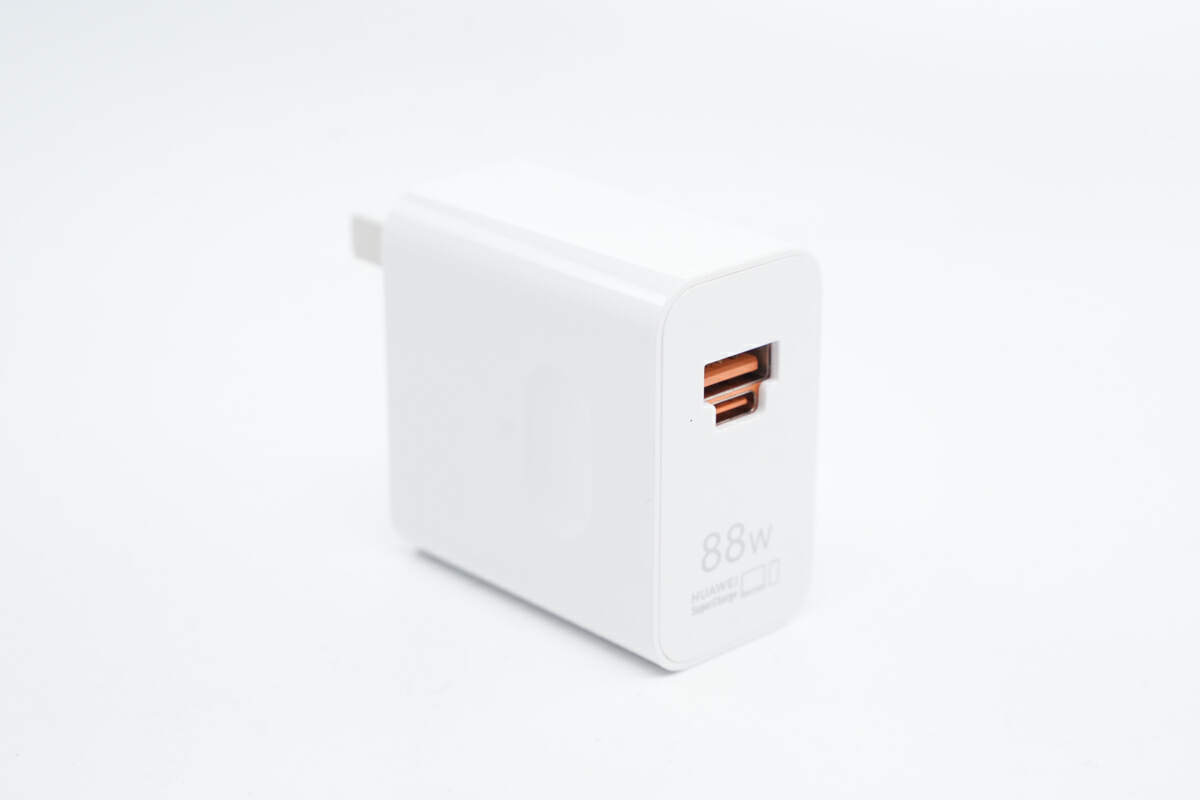
It adopts a white glossy finish with rounded corners.
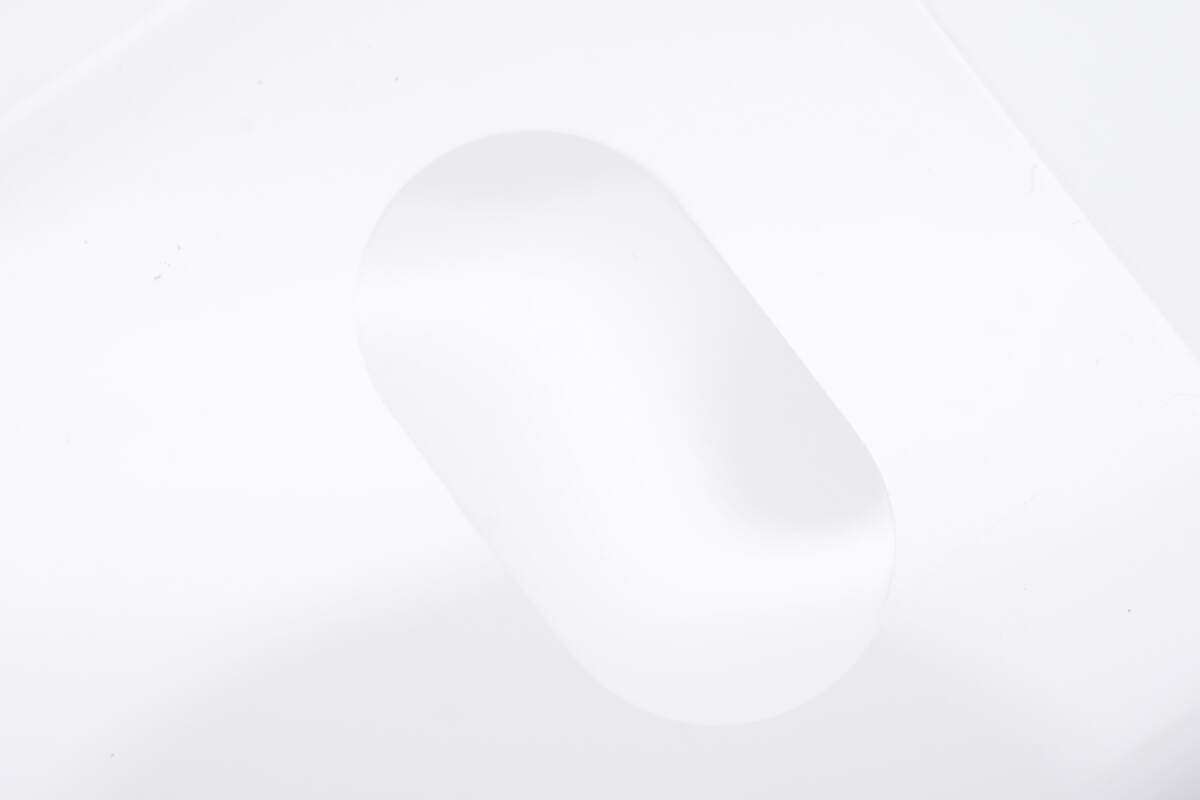
The slight hollows on two sides can facilitate the user to pull it out or plug it in.
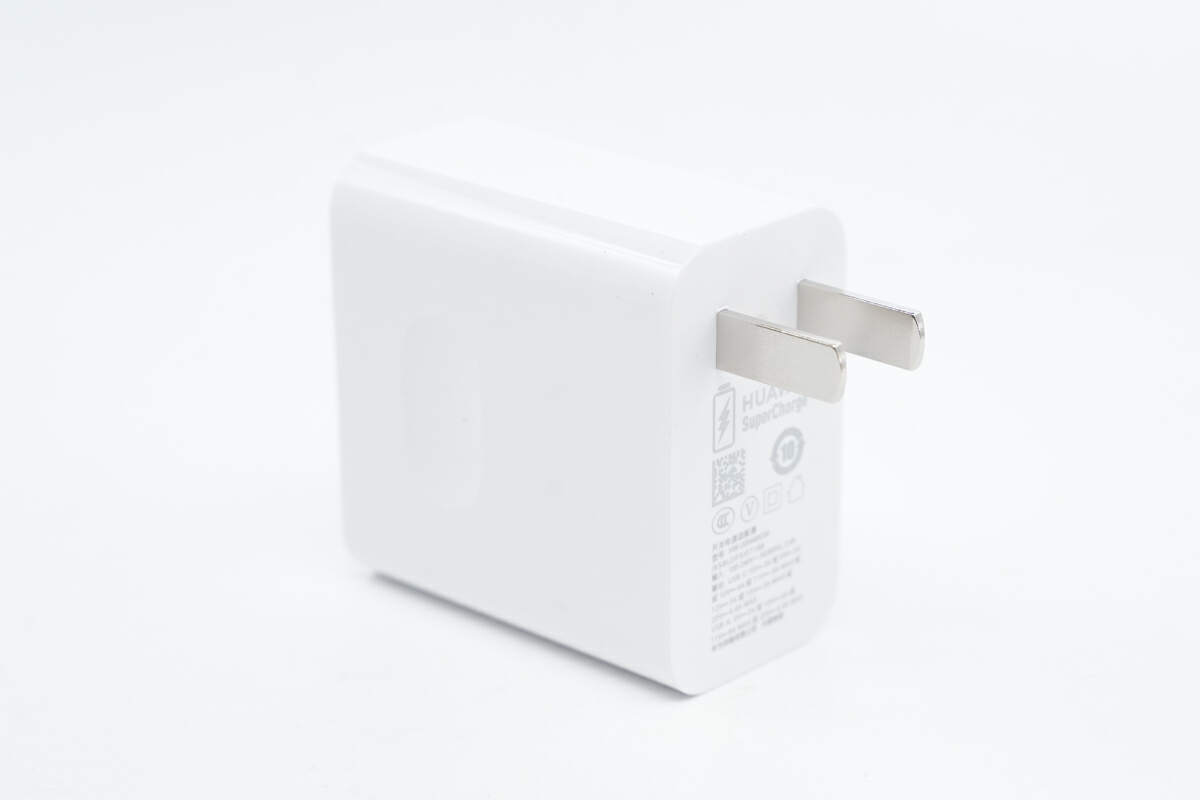
And the input prongs cannot be folded.
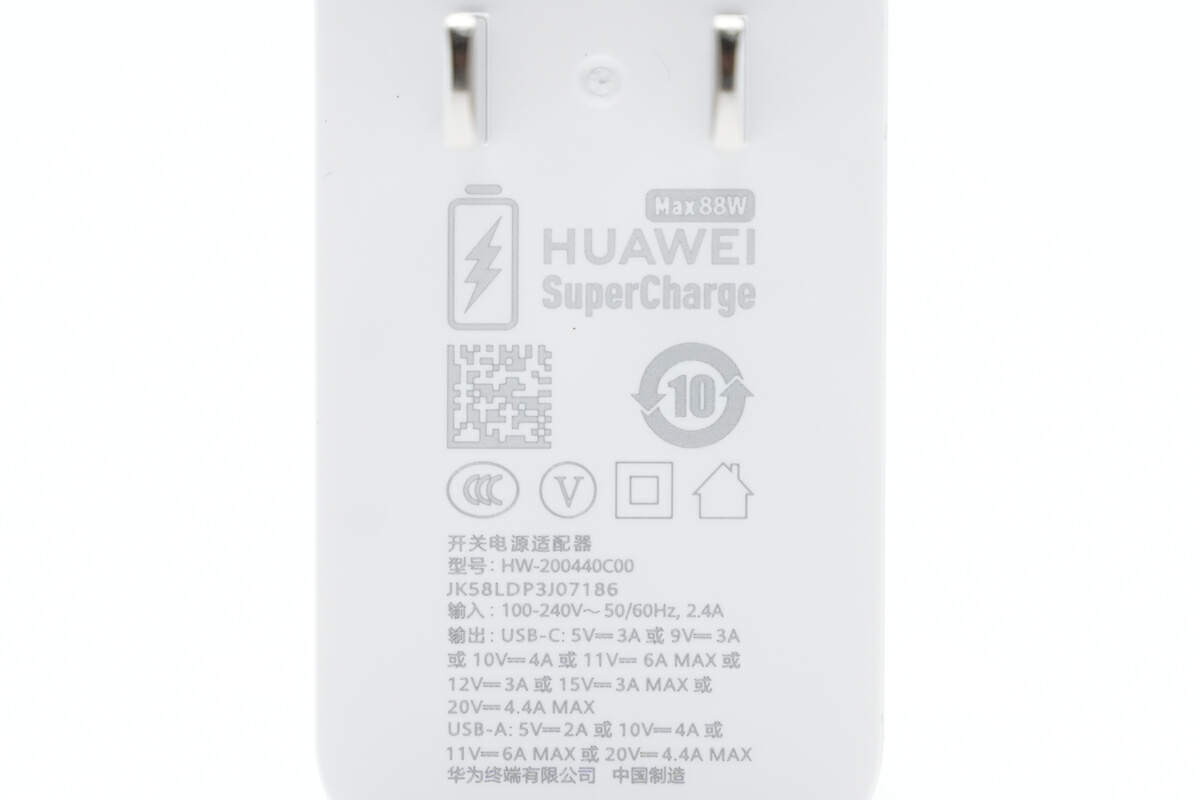
All specs info are printed under the input prongs. Model is HW-200440C00. It supports input of 100-240V~50/60Hz 2.4A, and both USB-A and USB-C can support up to 20A 4.4A, which is 88W.
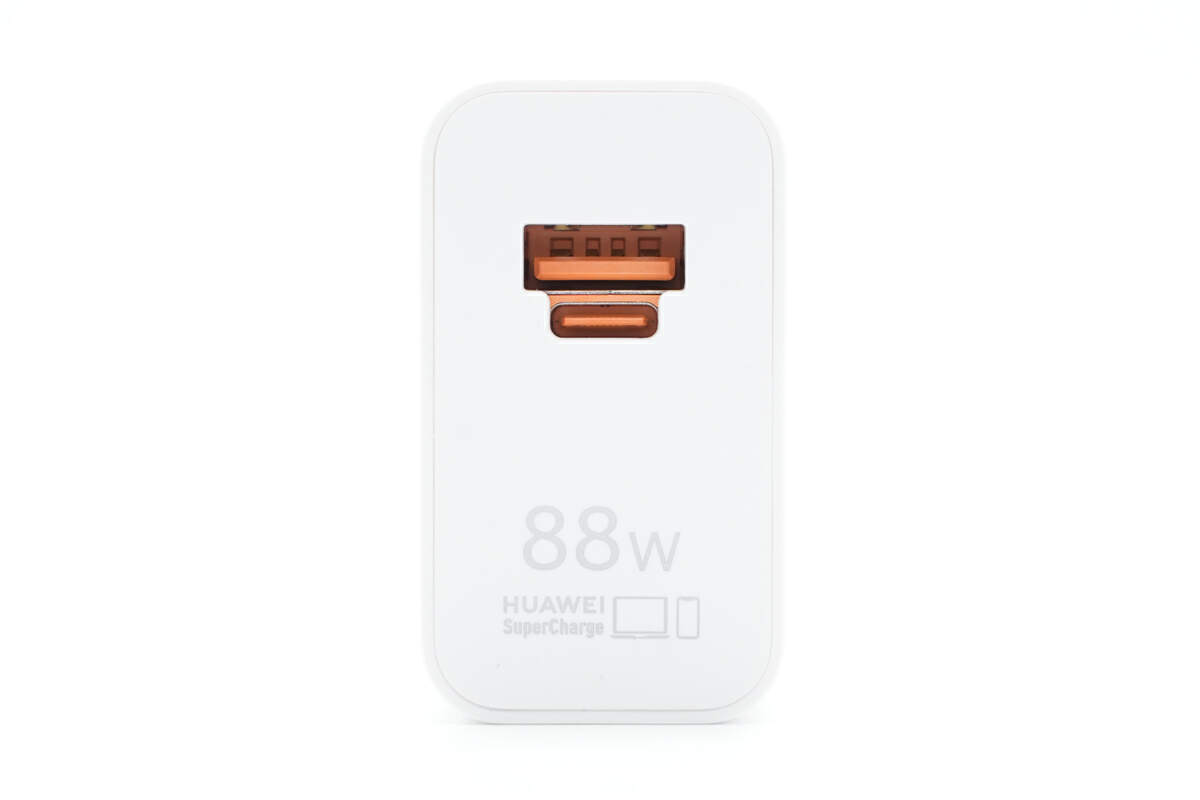
And the 88W HUAWEI SuperCharge and icons for smartphones and laptops are located below the output ports.
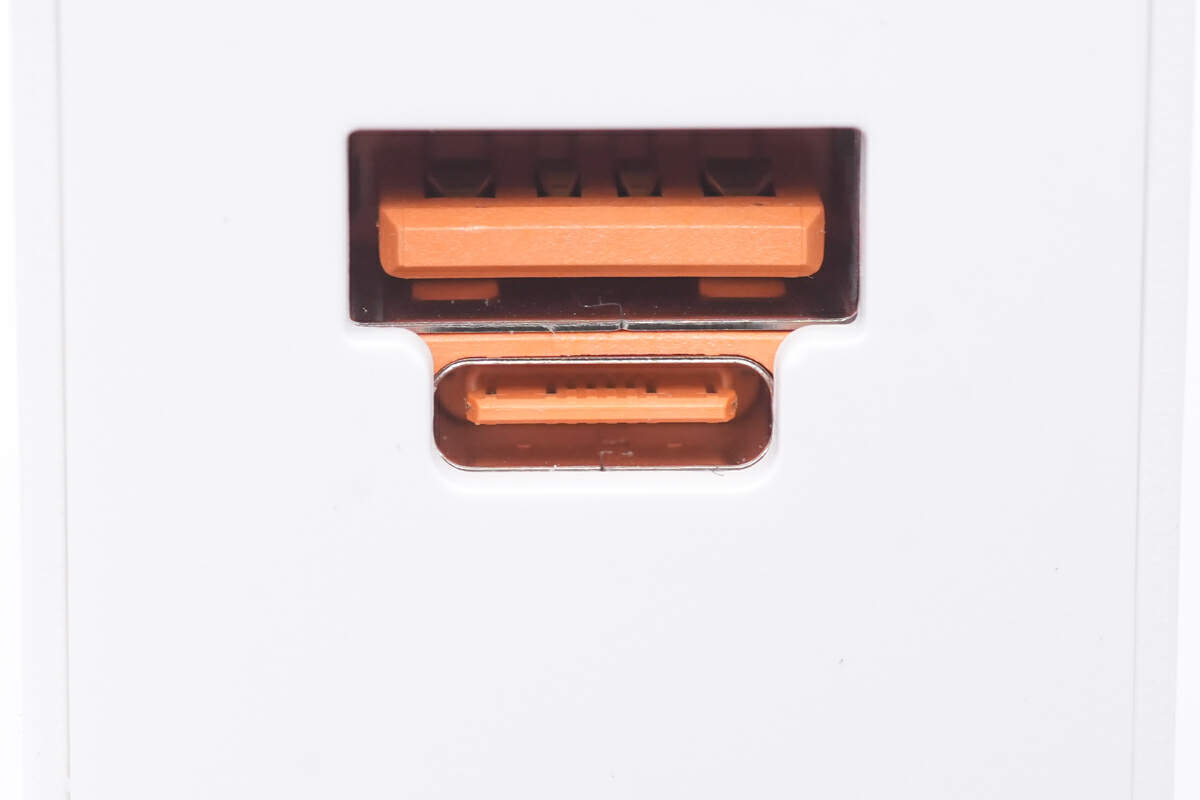
Next, we can see that the USB-C and USB-A are side by side, no gaps between them.
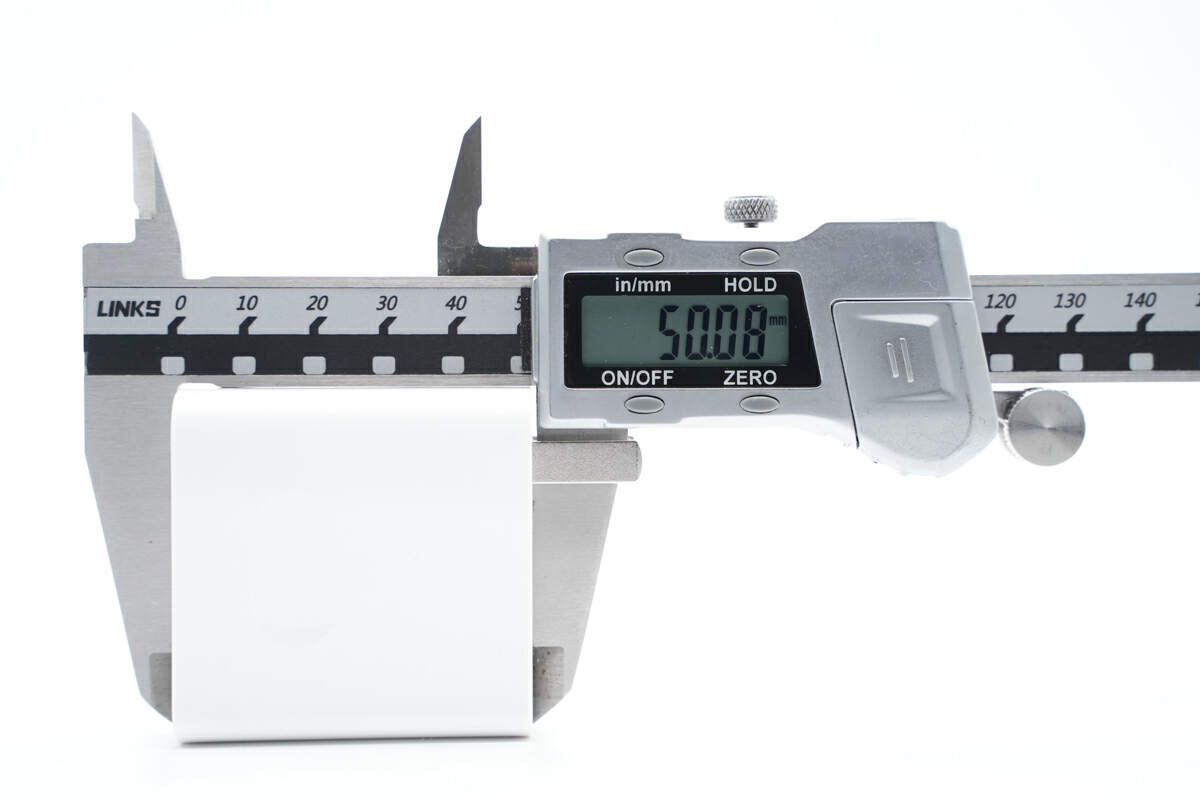
The length of the charger is about 50mm (1.97 inches).
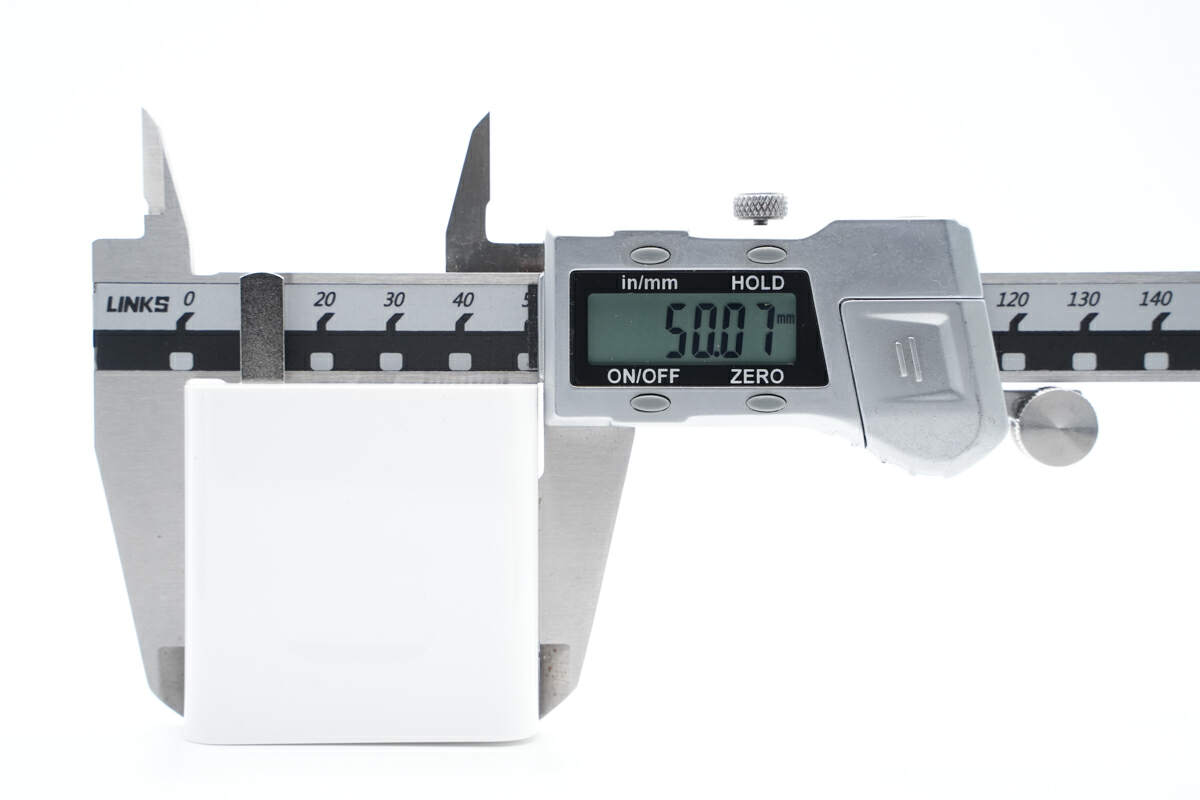
The width is also about 50mm (1.97 inches).
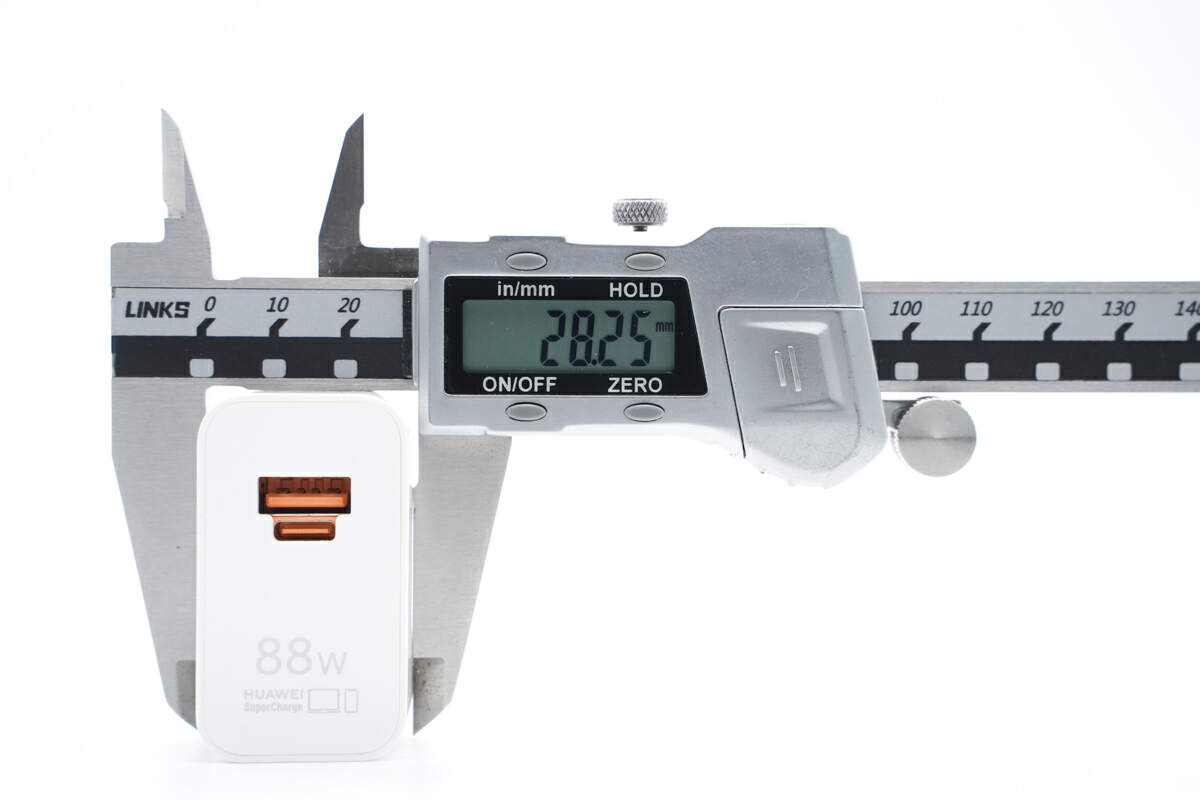
And the height is about 28mm (1.10 inches).
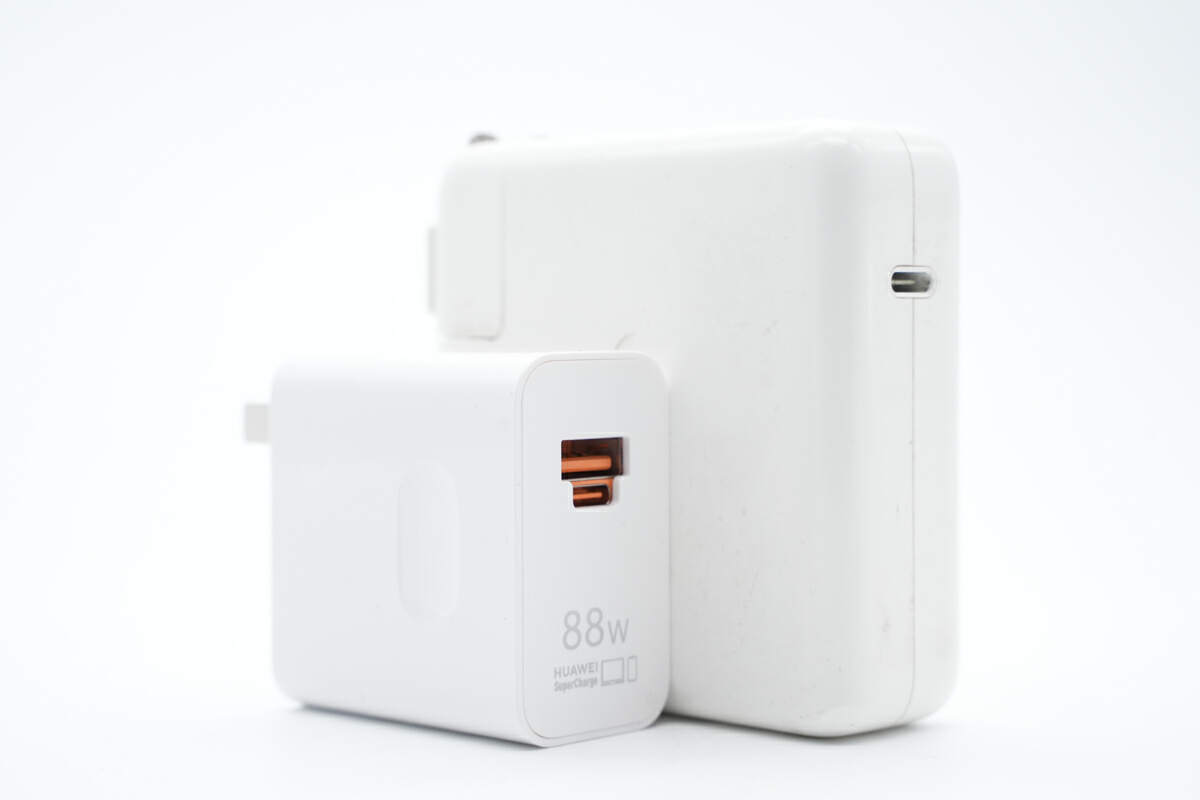
Compared with Apple 96W charger, it's much smaller.
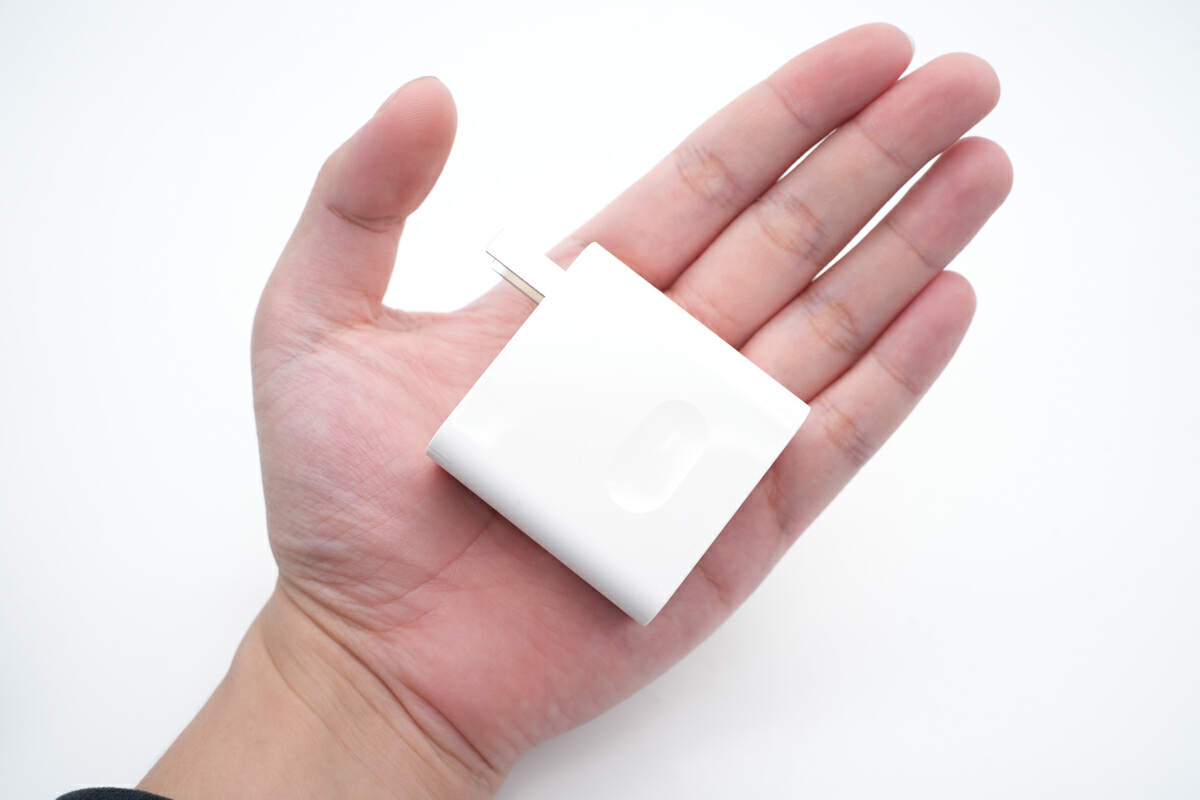
This is how it looks like on my hand.
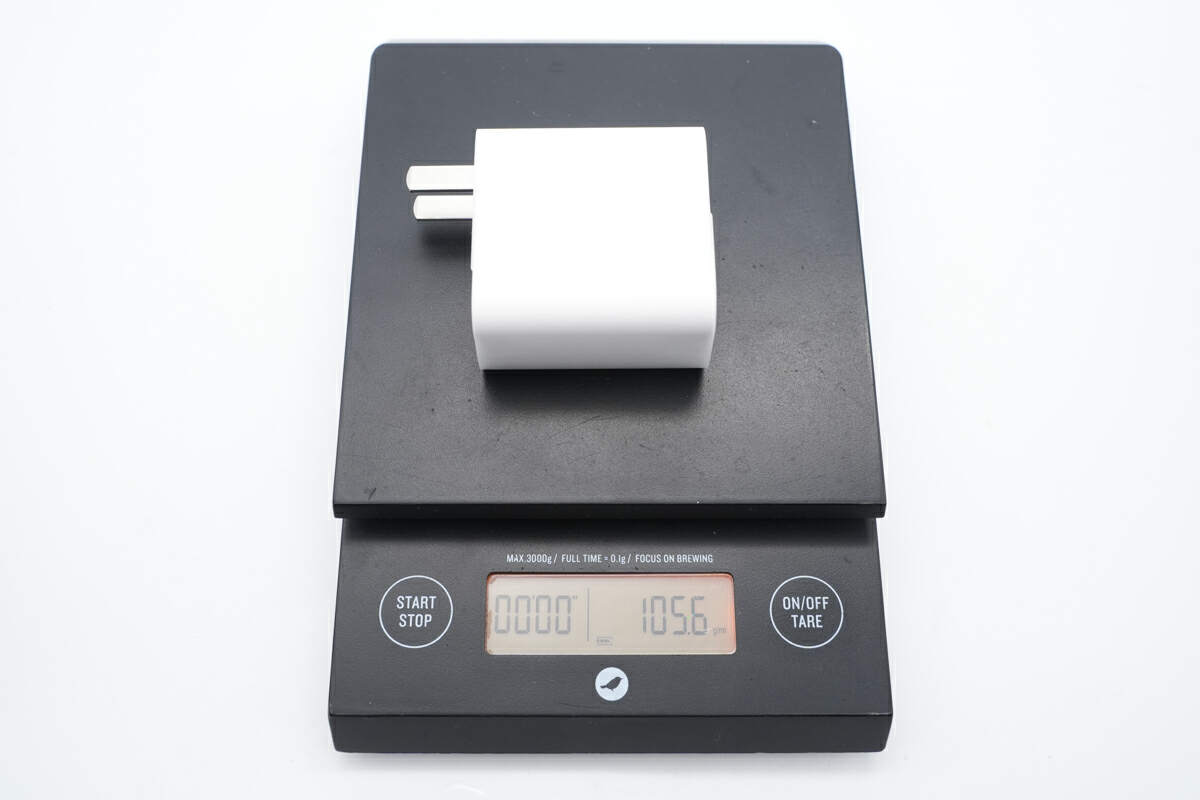
And the weight is about 105g (3.7 oz).
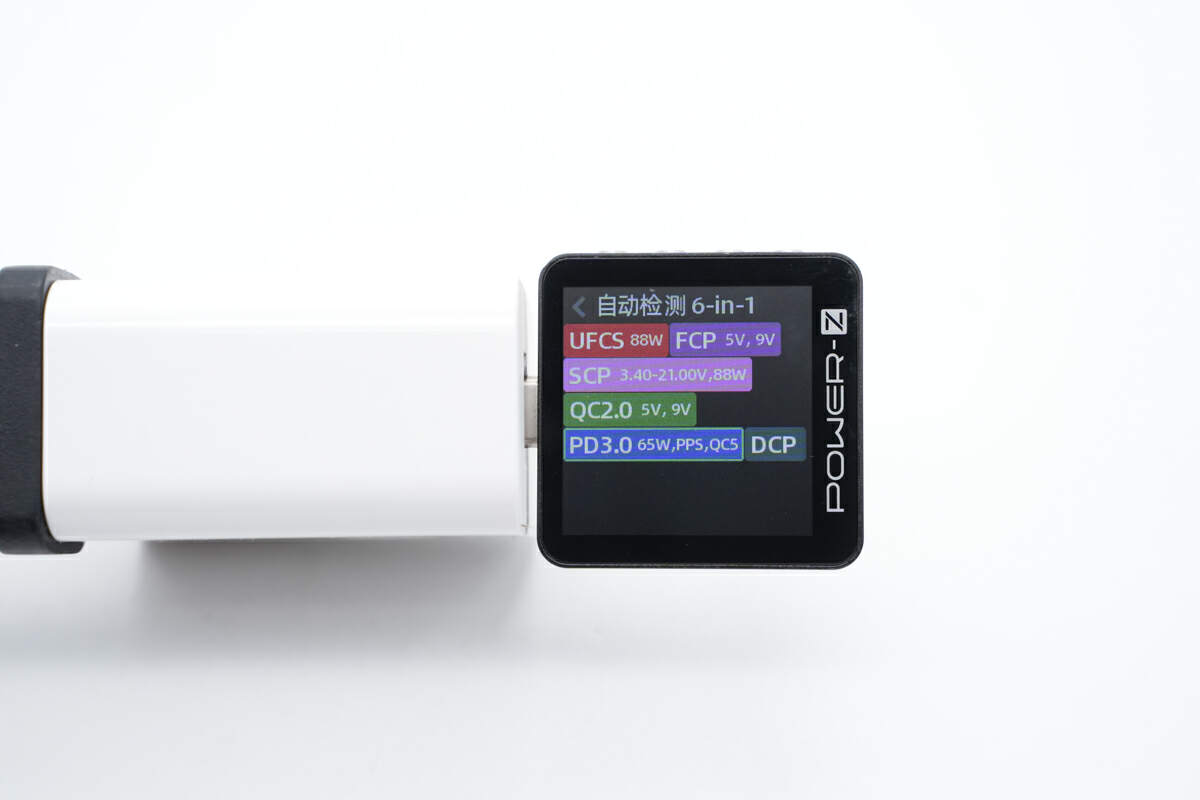
The ChargerLAB POWER-Z KM003C shows the USB-C supports UFCS 88W, FCP, SCP, QC2.0, PD3.0, PPS, QC5, and DCP protocols.
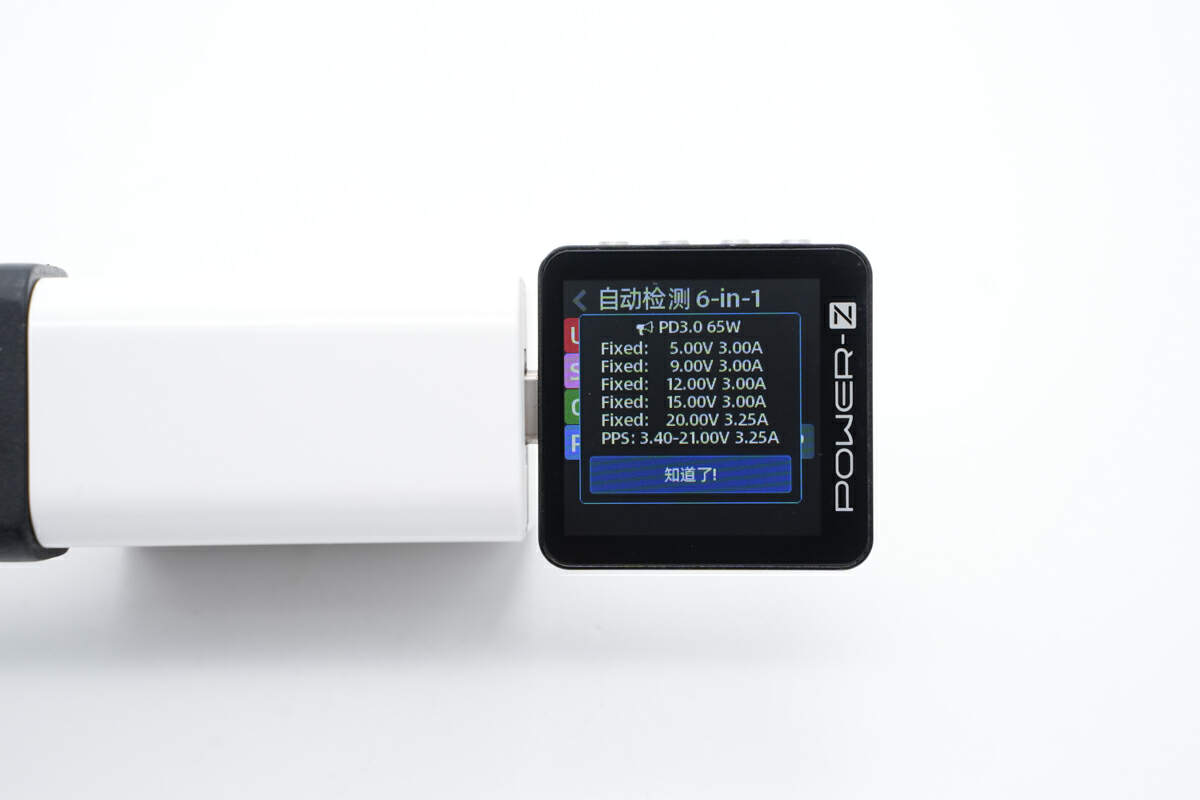
And it also supports five fixed PDOs of 5V/9V/12V/15V3A, 20V3.25A, and a set of PPS.
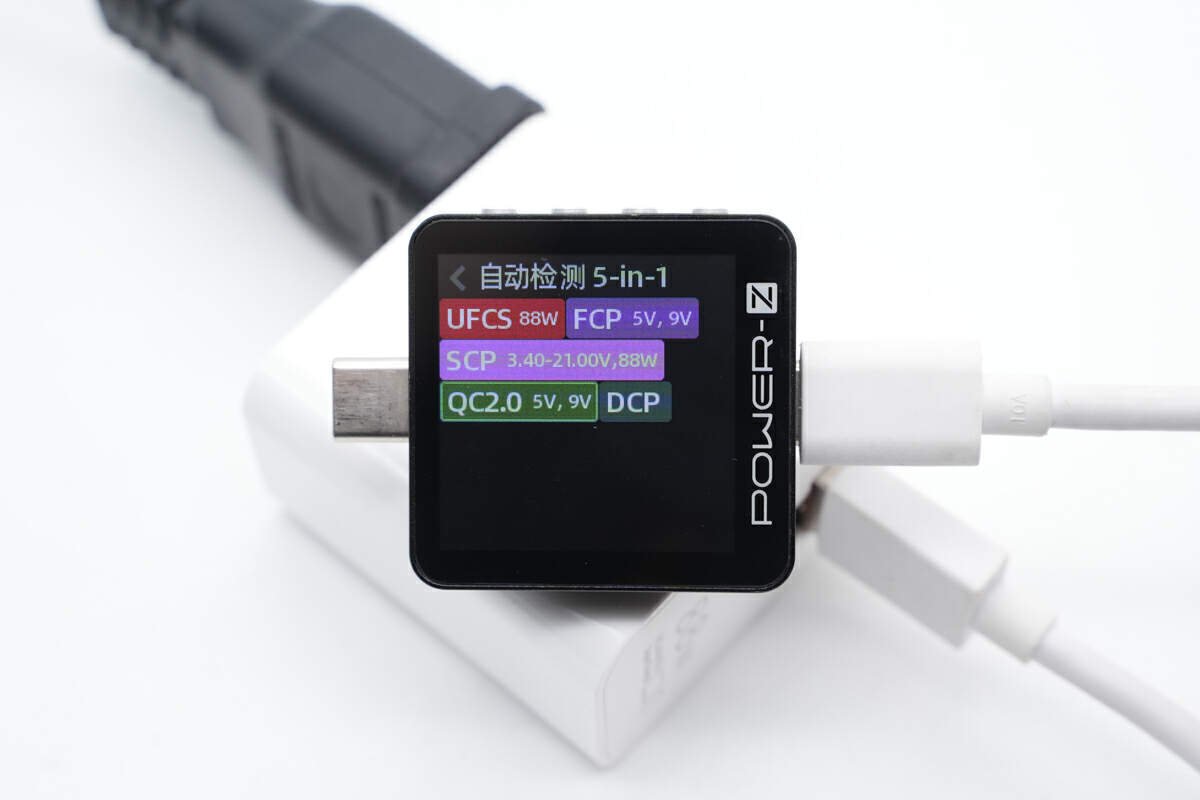
The USB-A also supports UFCS 88W, FCP, SCP, QC2.0, and DCP protocols.
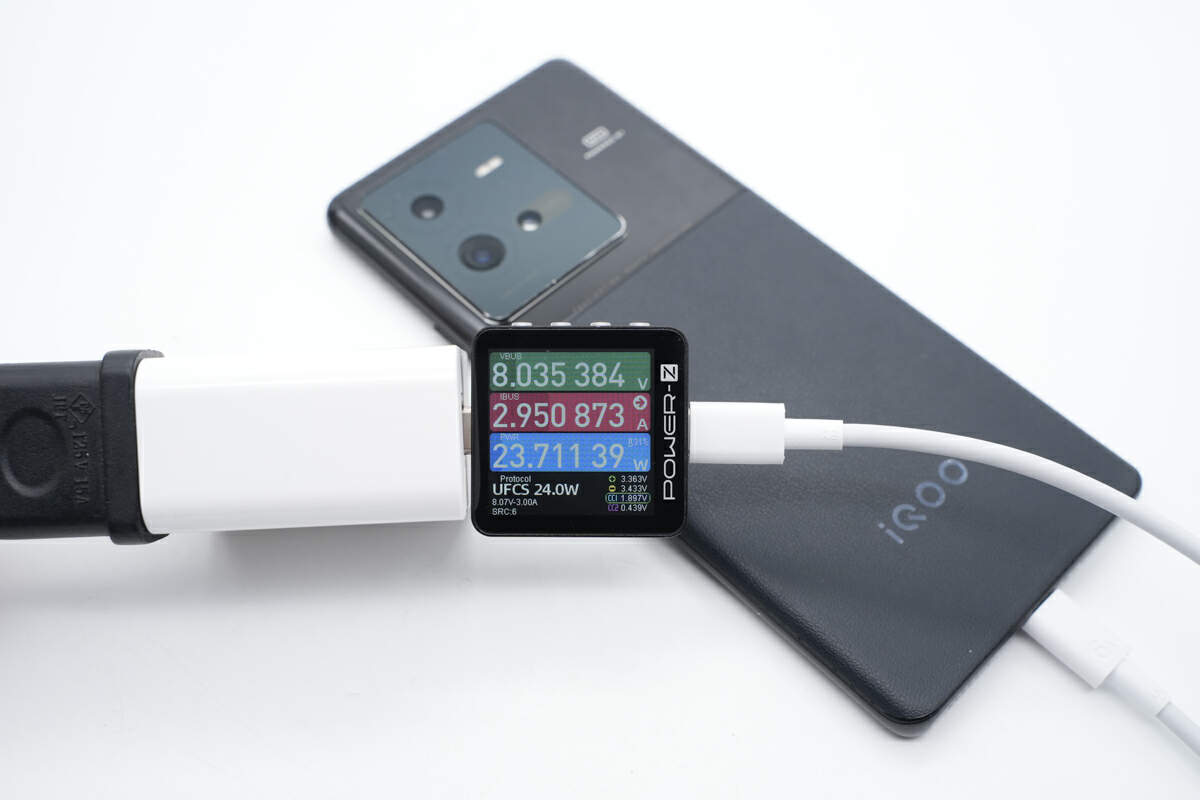
Use it to charge the iQOO 10 Pro, the real-time power is about 23W, and the protocol is UFCS (Universal Fast Charging Specification).
Teardown
Now that we have completed our unboxing and testing of this Huawei charger, it's time to take apart the device and examine its internal components and structure.
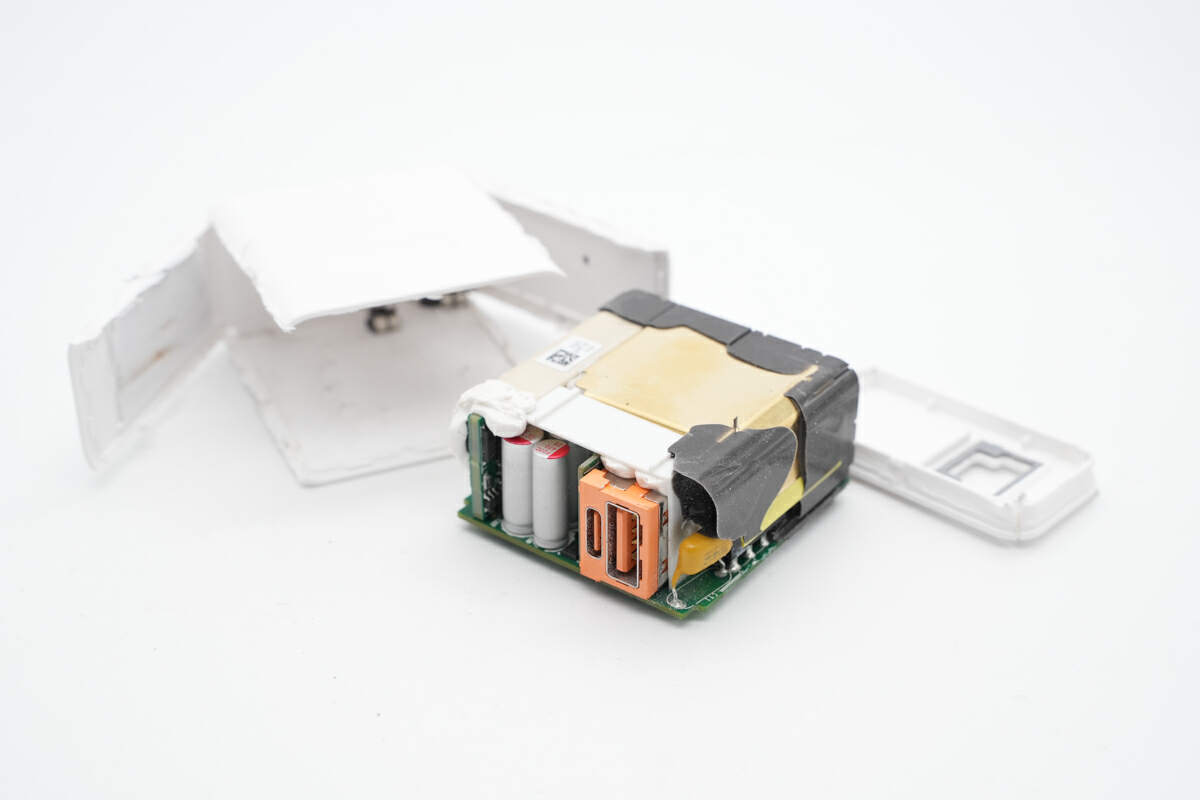
Next, cut off the plastic case using the cutting machine and take out the internal PCBA module.
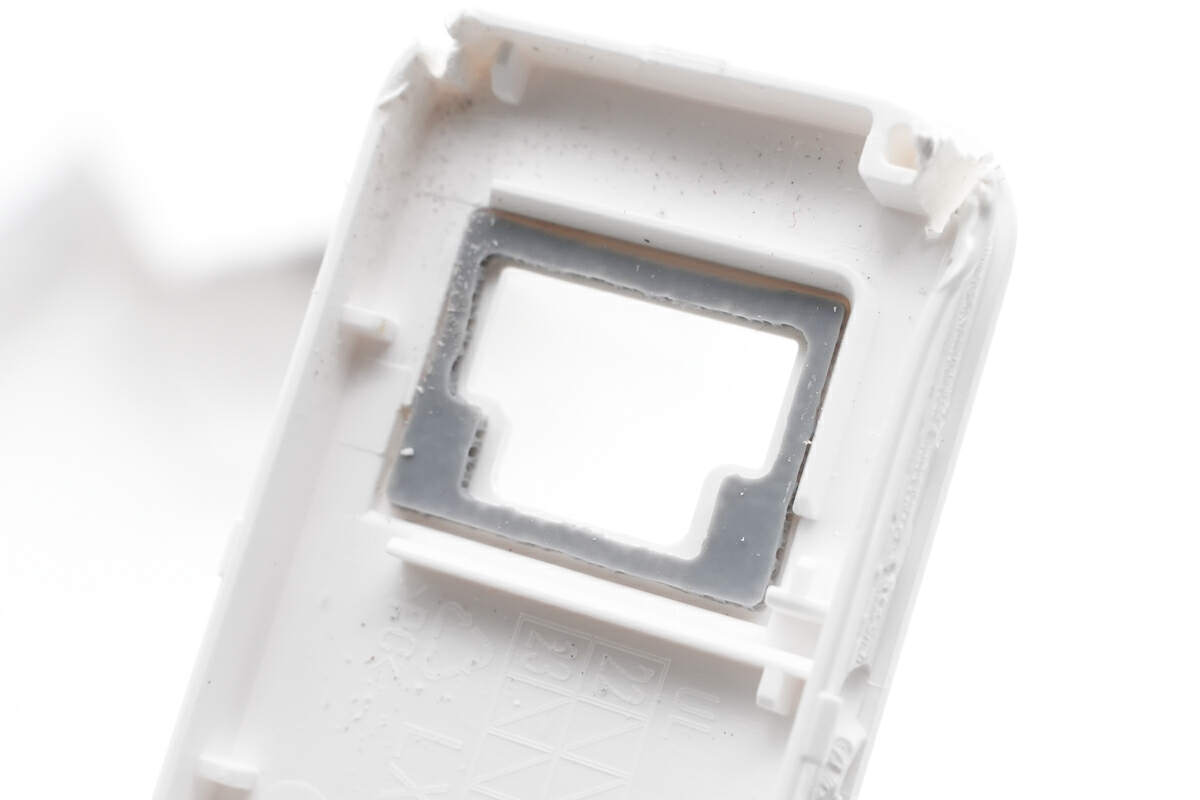
There's a circle of foam around two USB ports.
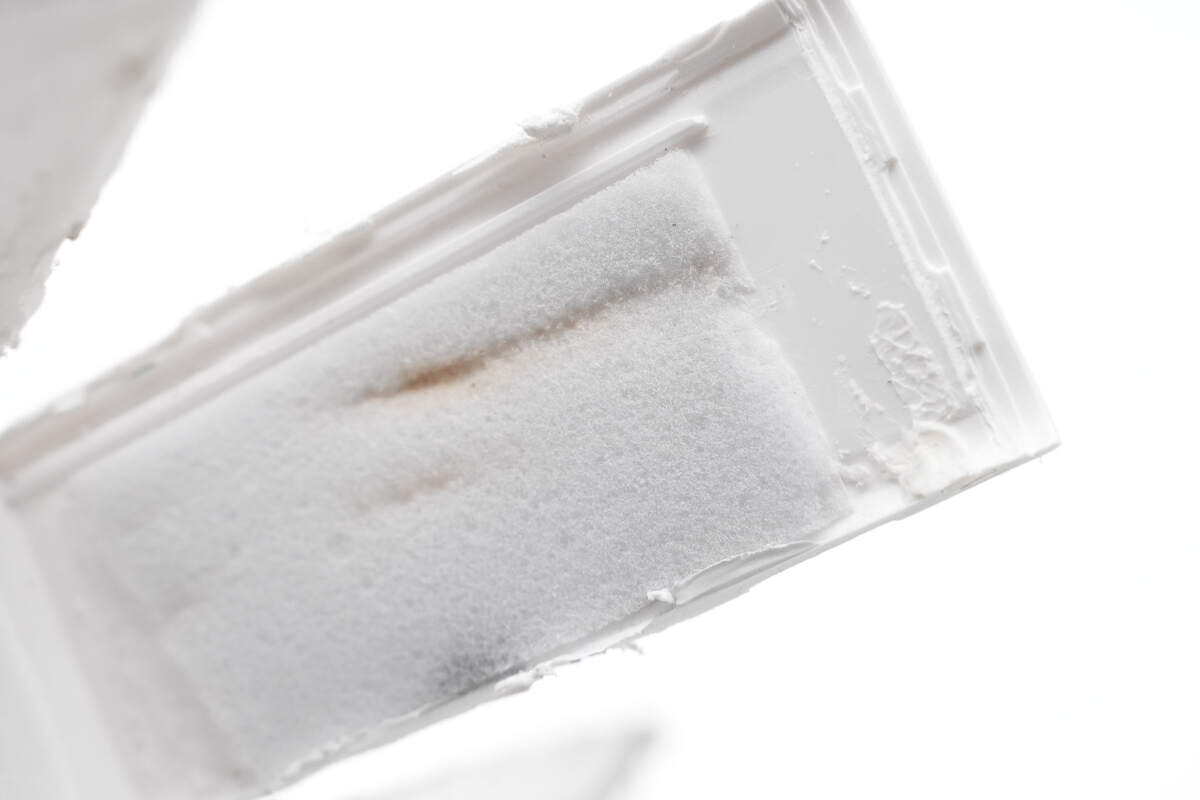
And there is more foam inside the charger.
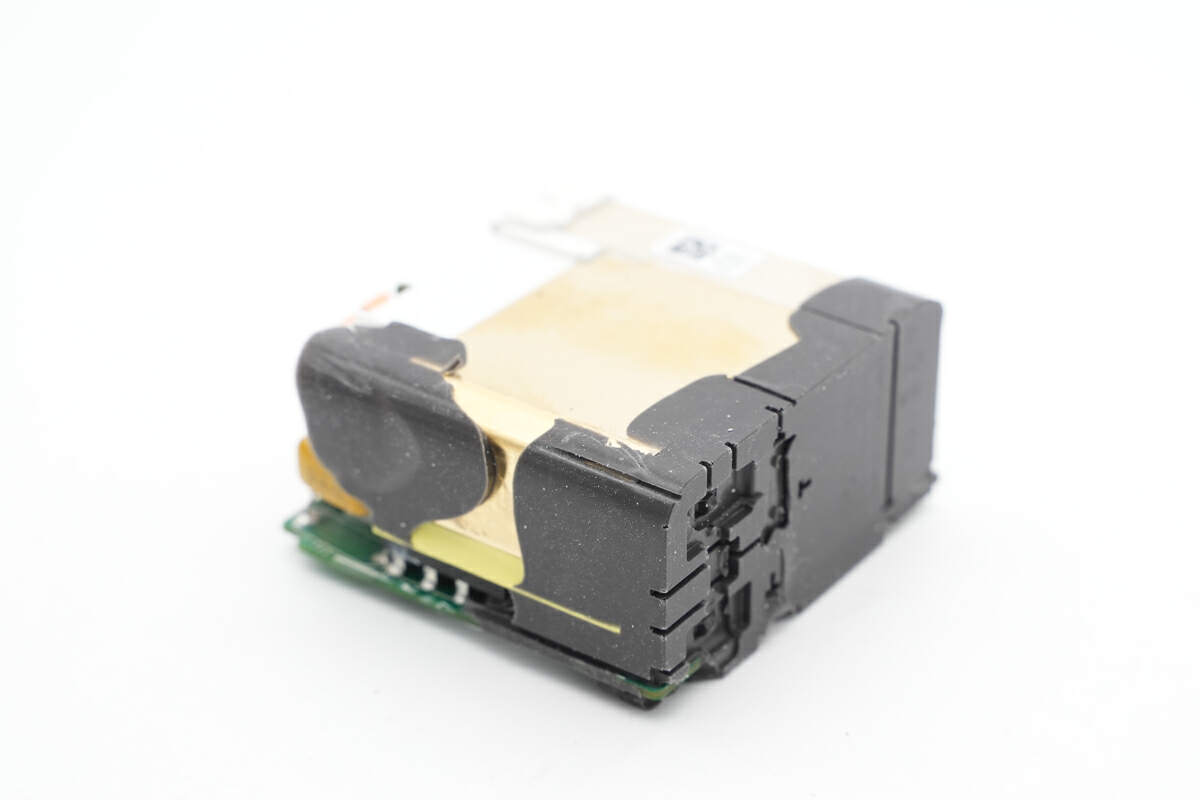
The input end of the PCBA module is filled with potting compound, and the module is covered with a brass heat sink.
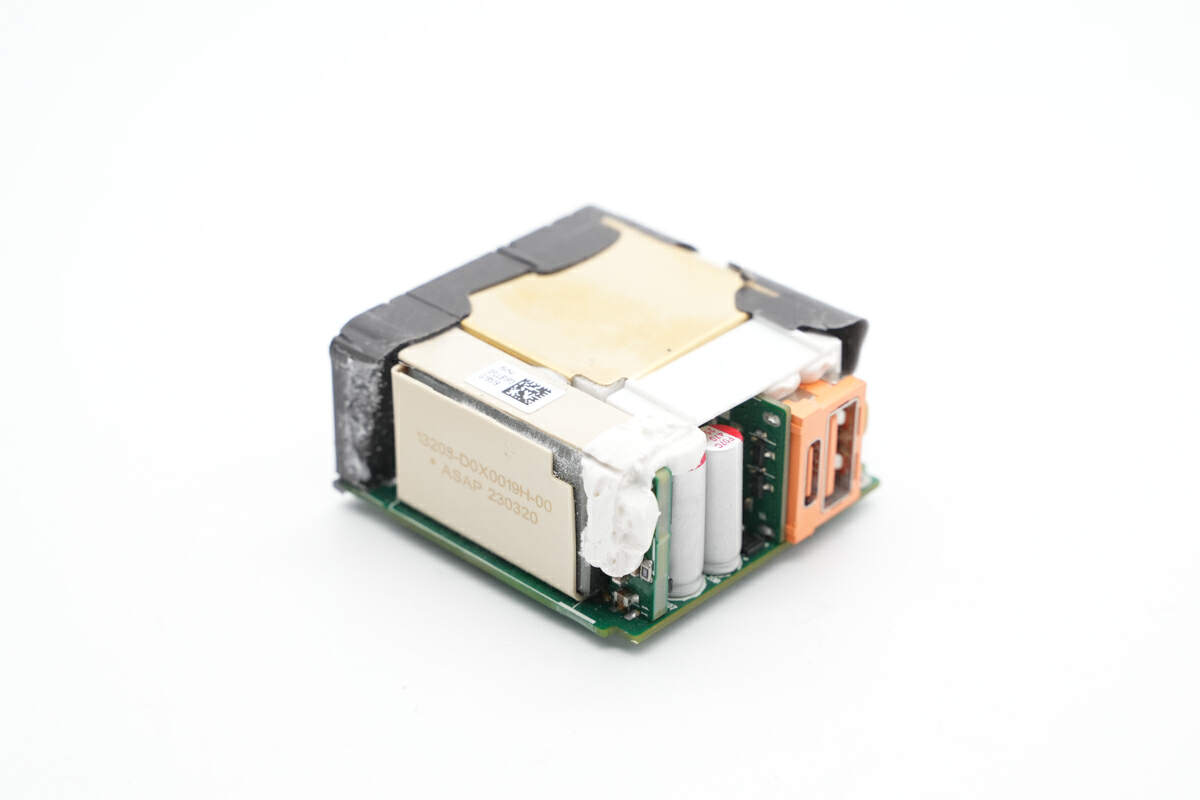
And there is a white plastic isolated board to isolate the primary and secondary sides.
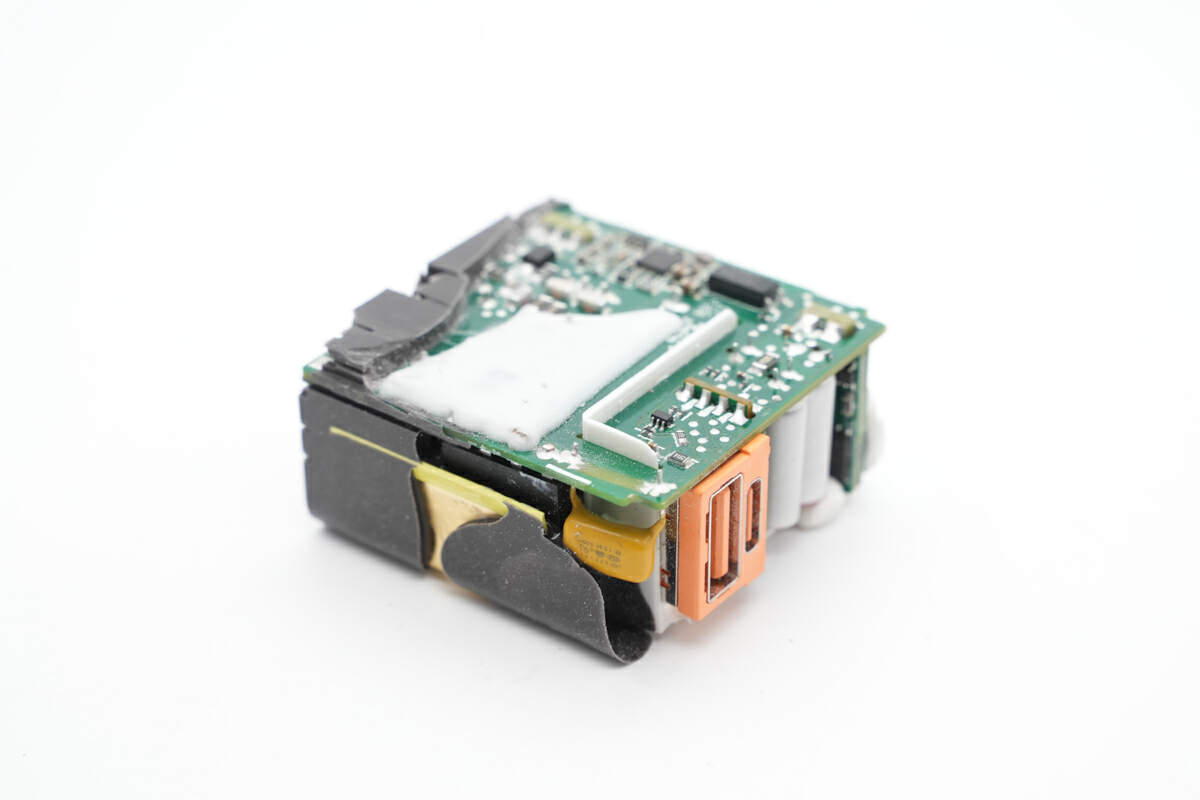
You can see the groove area that fix the white plastic isolated board in place.
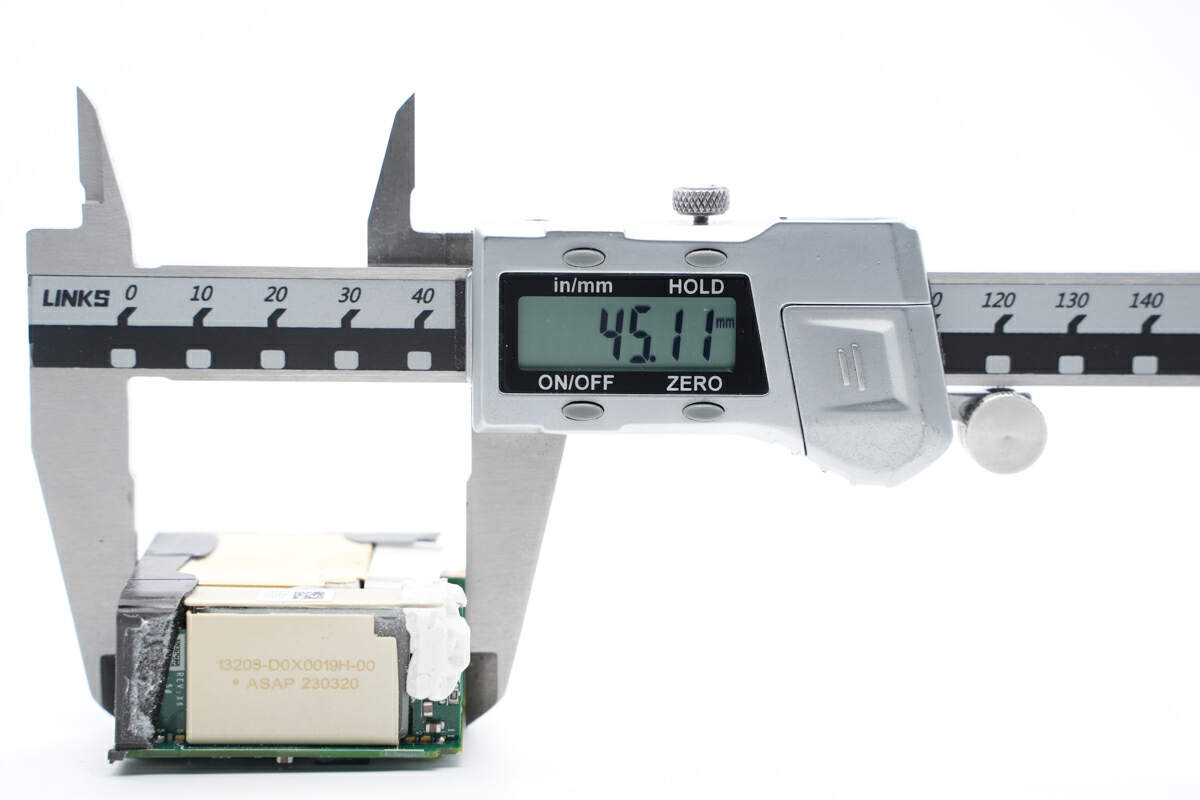
The length of the PCBA is about 45.1mm (1.78 inches).
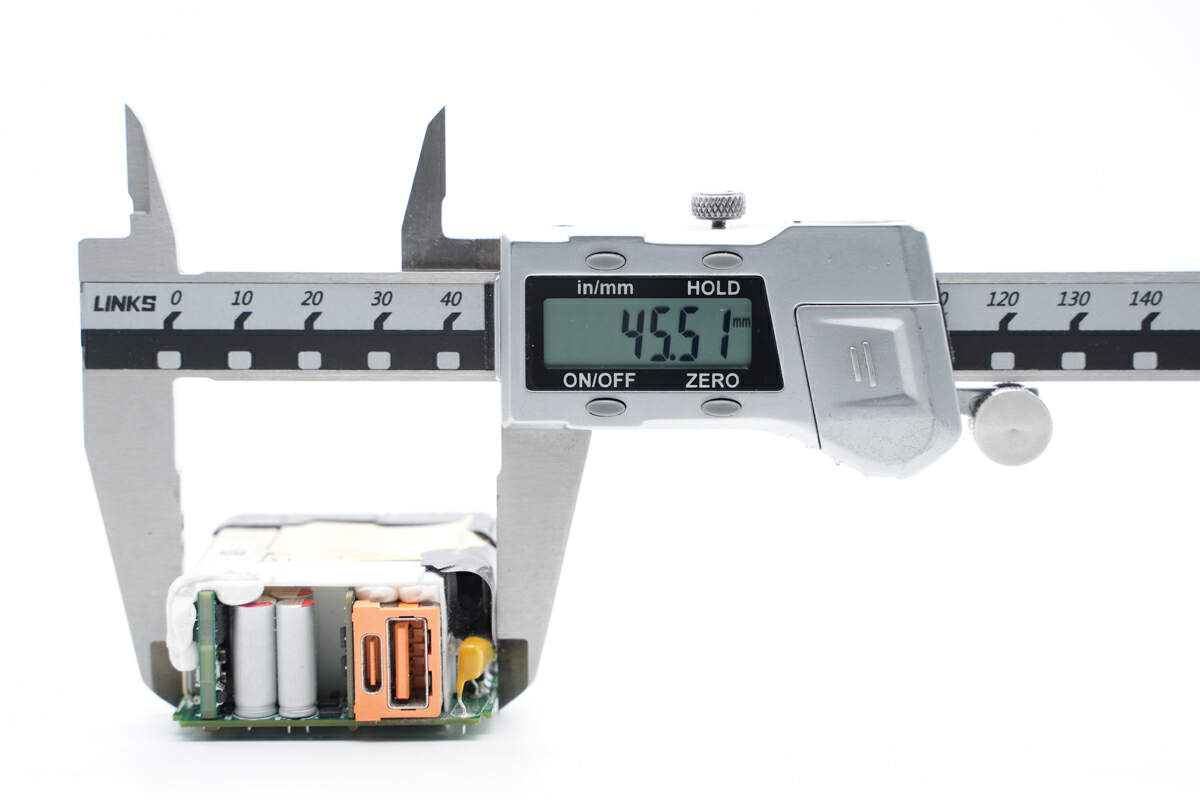
The width is about 45.5mm (1.79 inches).
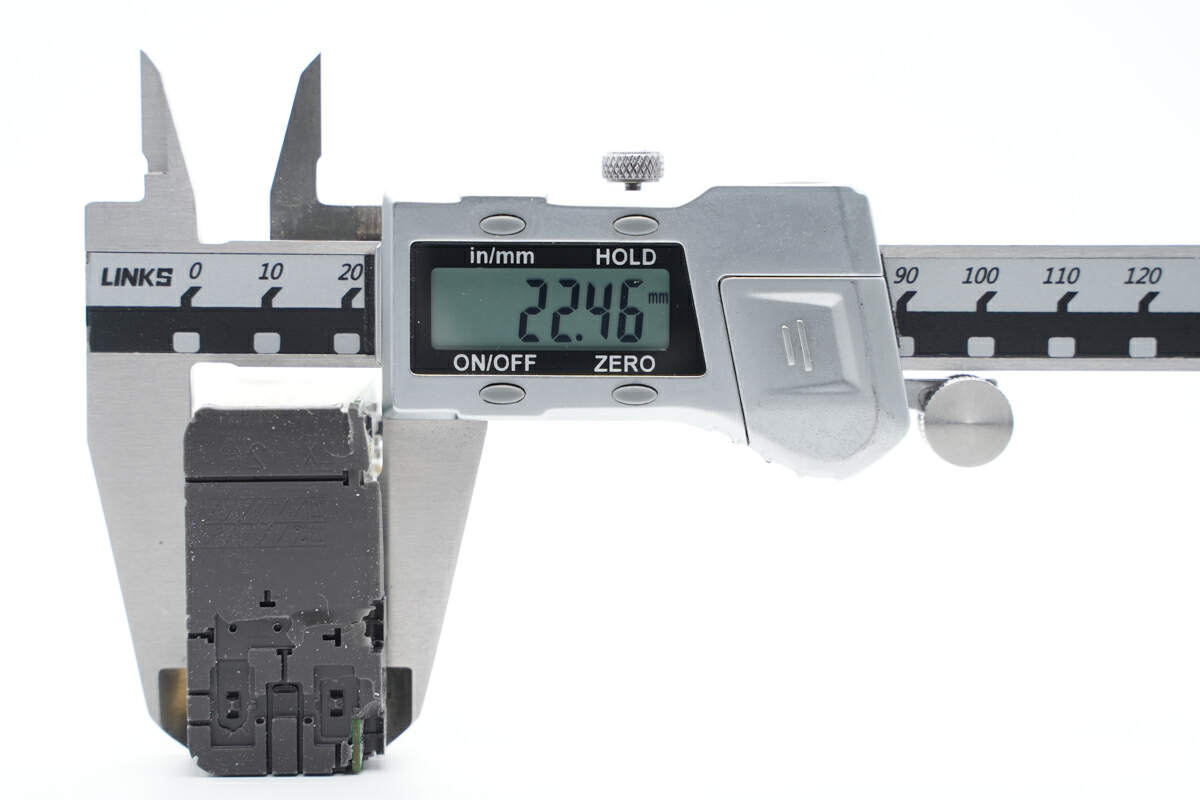
And the height is about 22.5mm (0.89 inches).
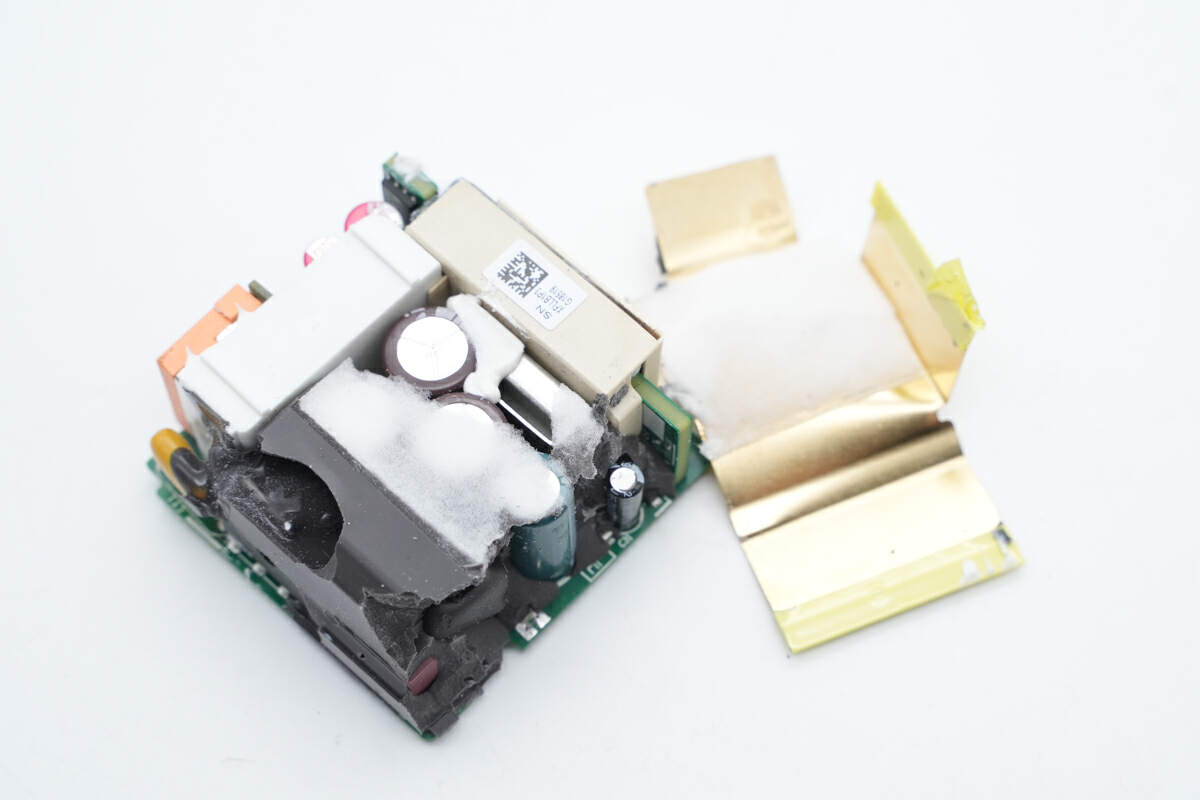
Remove the heat sink.
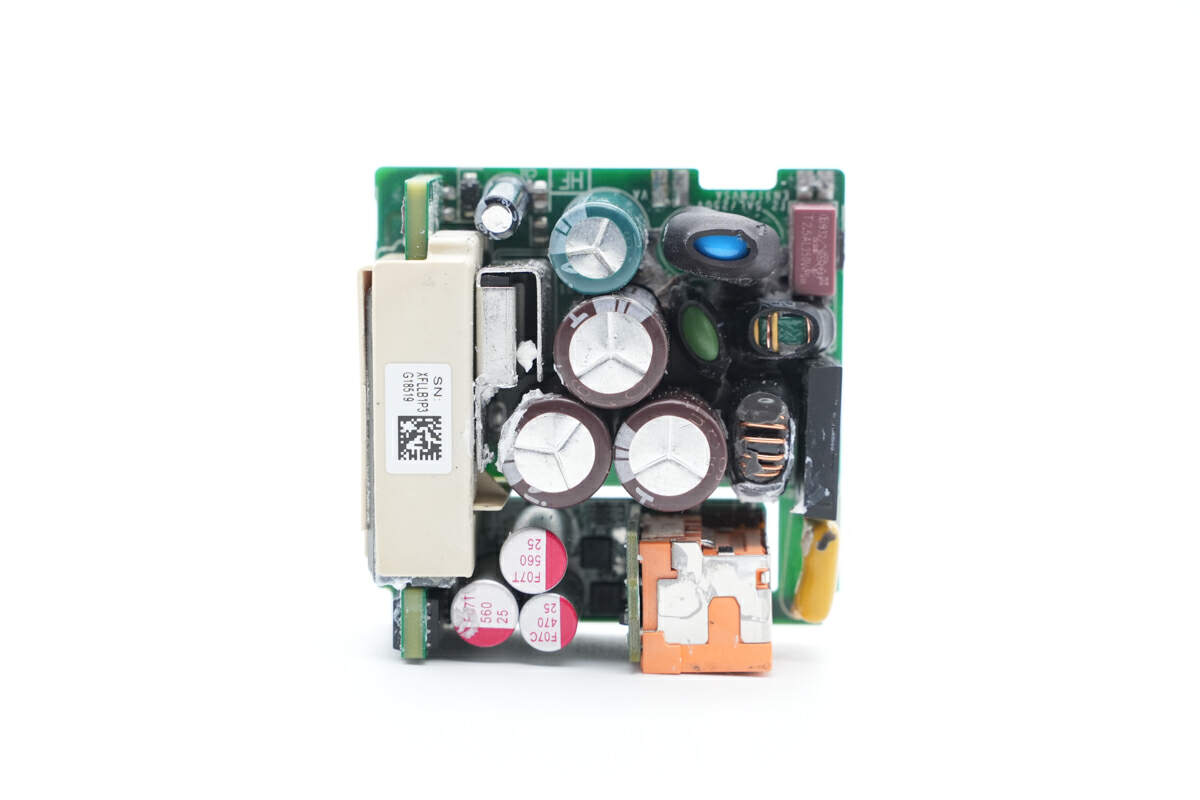
The input fuse, varistor, and high-voltage electrolytic capacitor are on the front of the PCBA module.
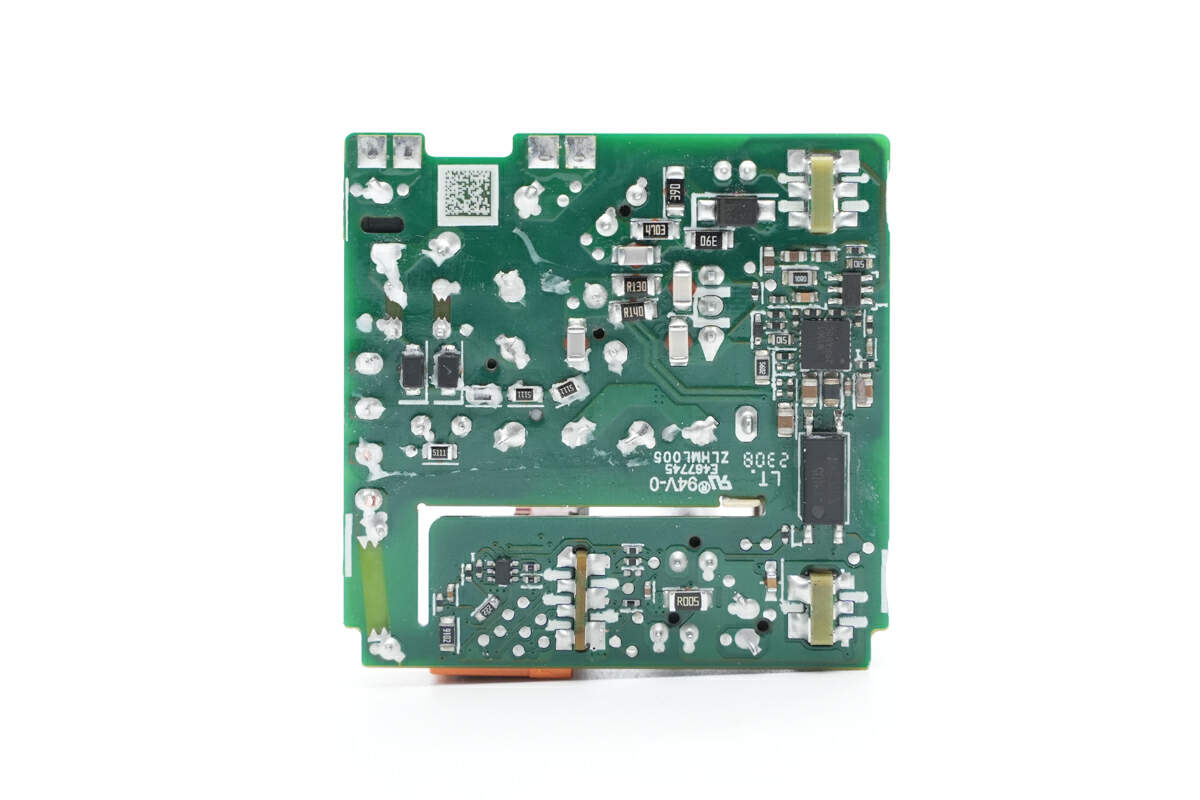
And the primary controller chip and the feedback optocoupler are on the back.
ChargerLAB found it adopts a planar transformer to make the charger smaller, and the groove can isolate the primary and secondary sides. Next, let's introduce all components one by one.
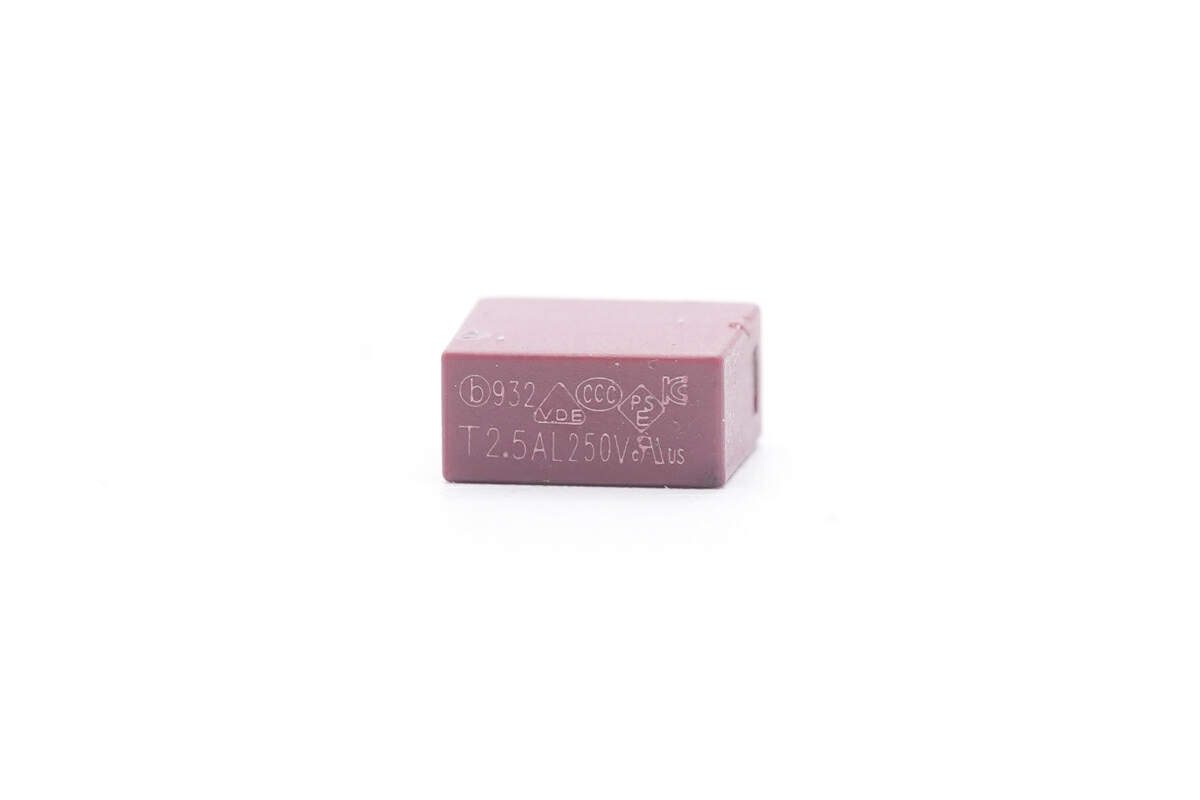
The input time-delay fuse is from Better Electronics. 2.5A 250V.
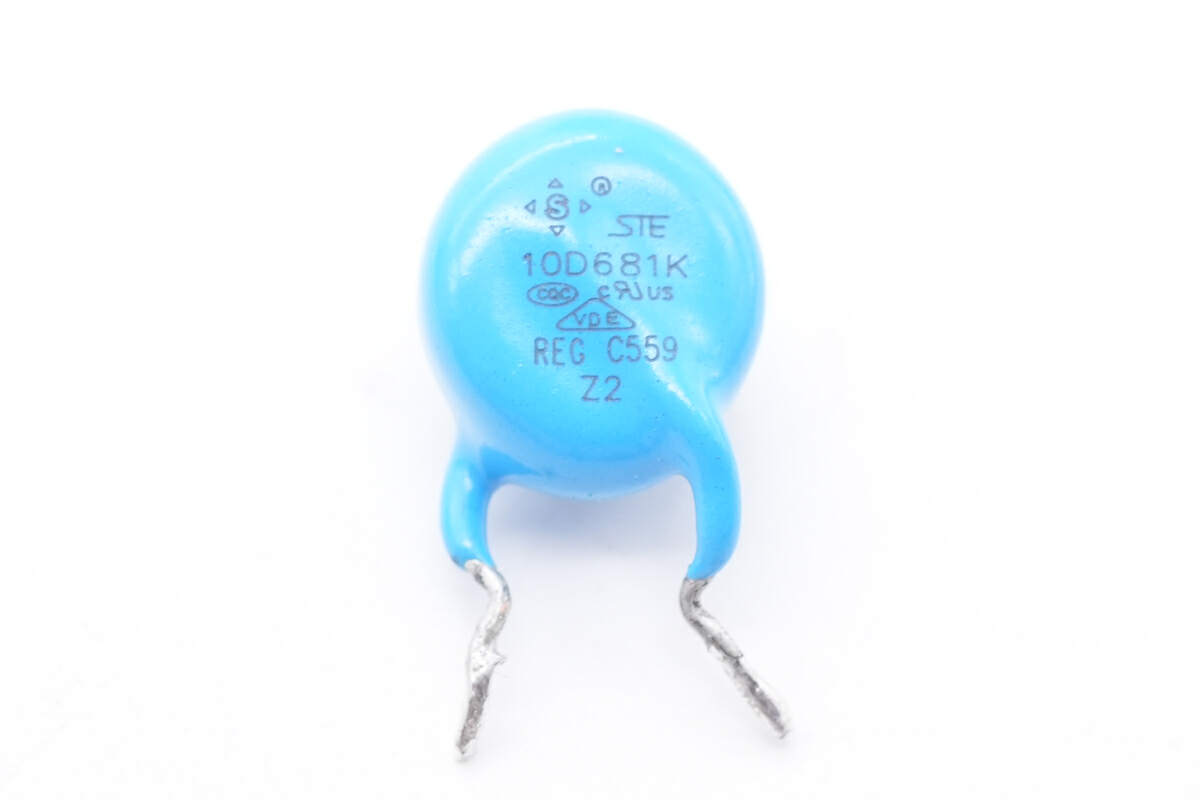
The blue varistor is from STE for input surge protection, wrapped with heat-shrinkable tubing.
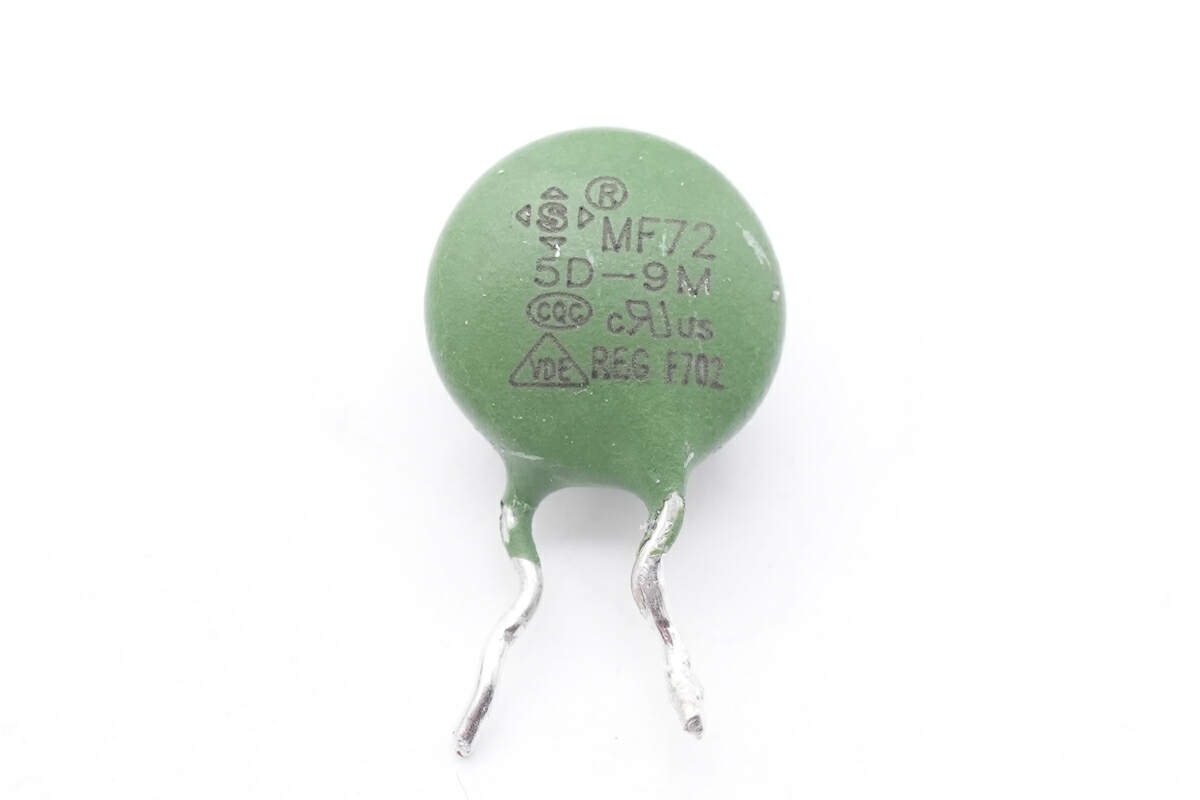
And the green NTC thermistor is from STE MF72 series, used to suppress the surge current.
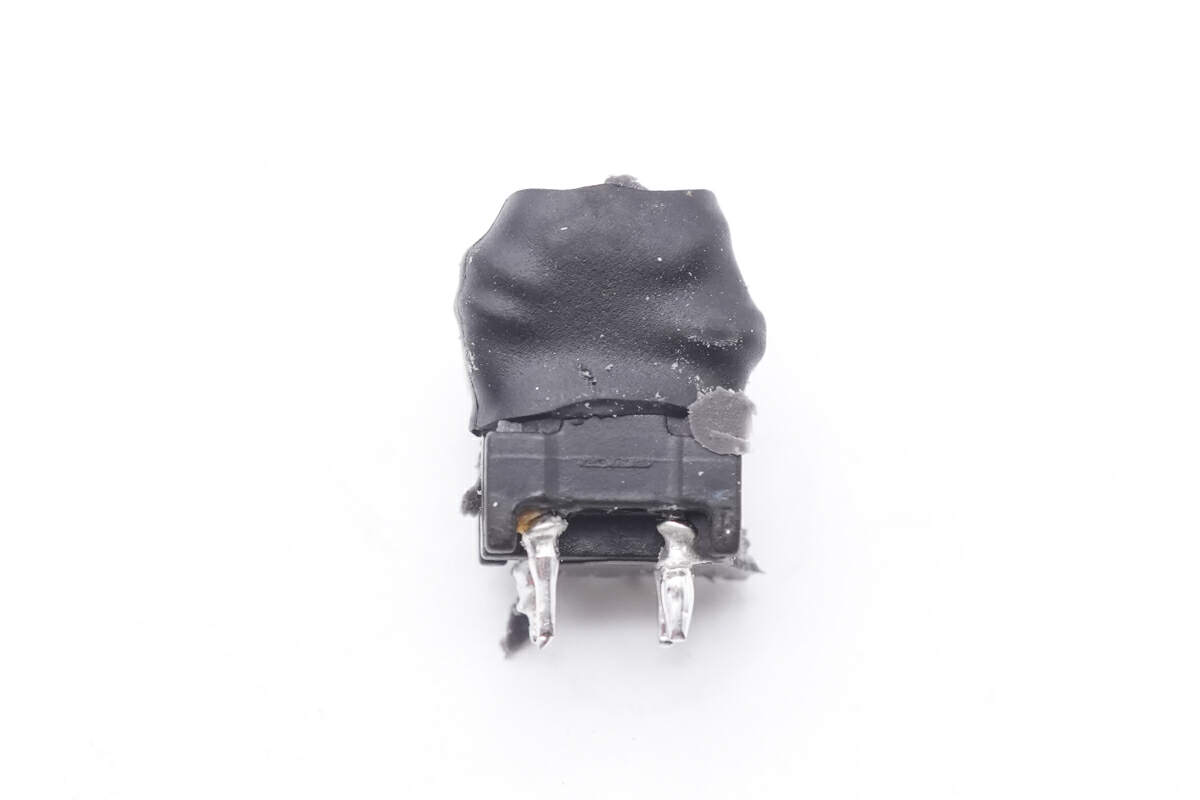
The common mode choke is also insulated by heat-shrinkable tubing.
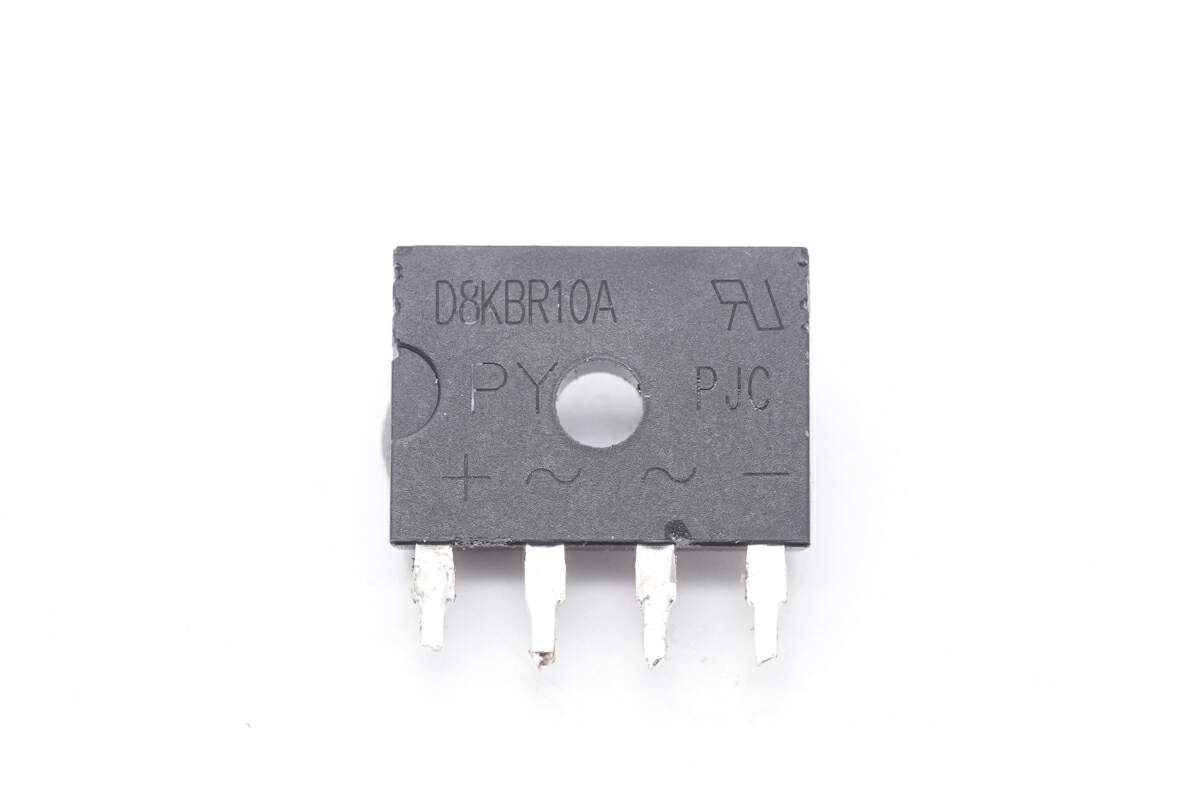
The bridge rectifier is from Pingwei. Model D8KBR10A. 8A 1000V.
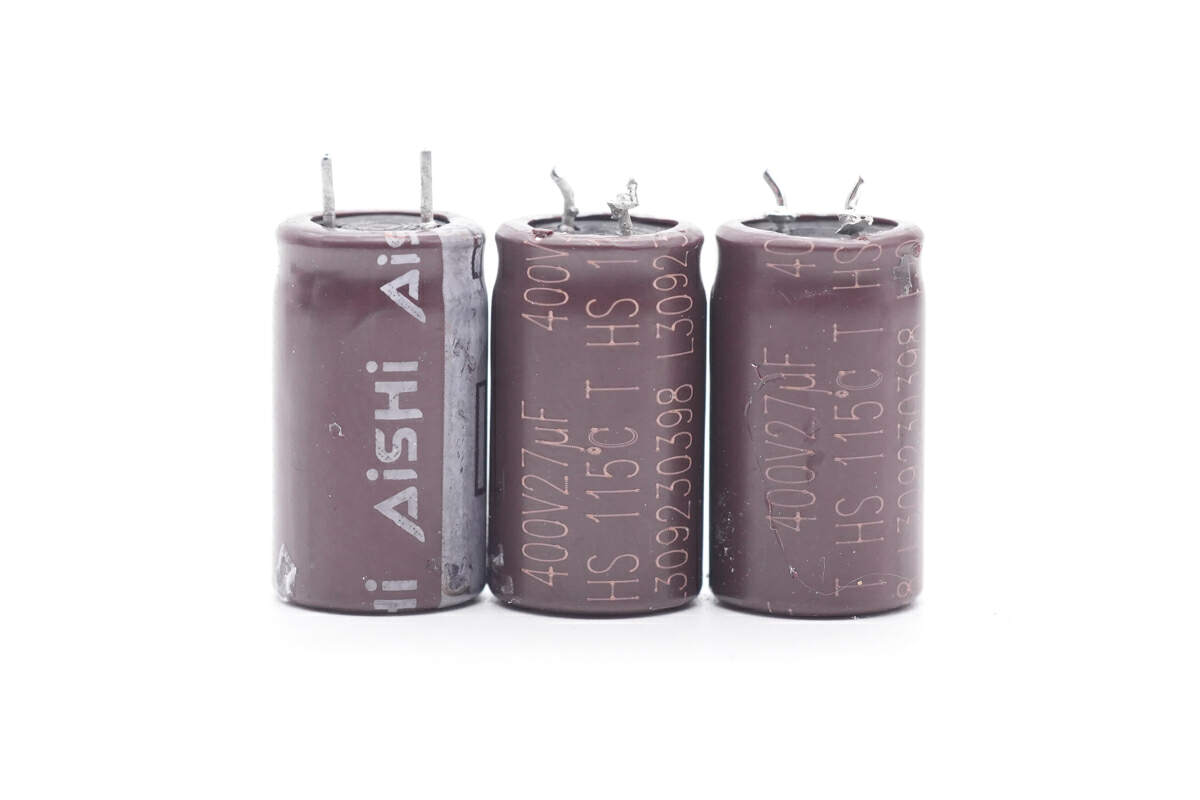
Those three electrolytic capacitors are from AiSHi HS series. 400V 27μF for each.
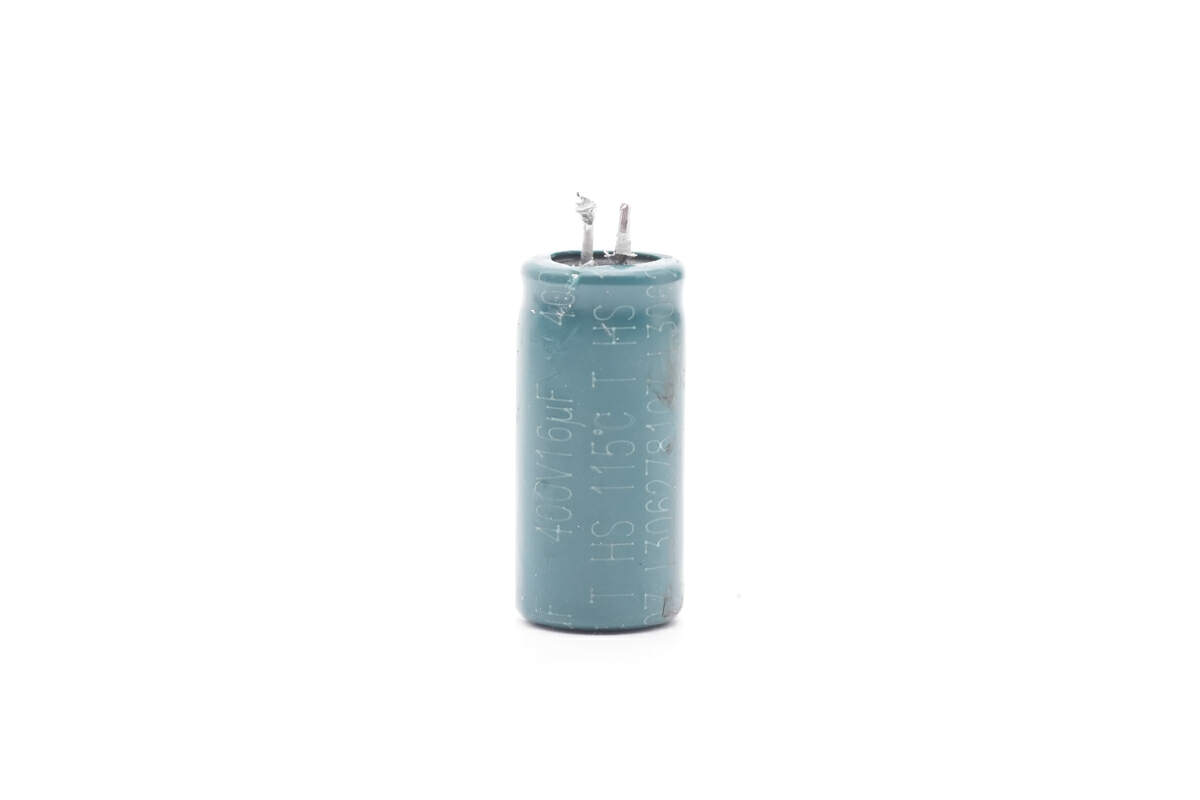
Another electrolytic capacitor is 400V 16μF.
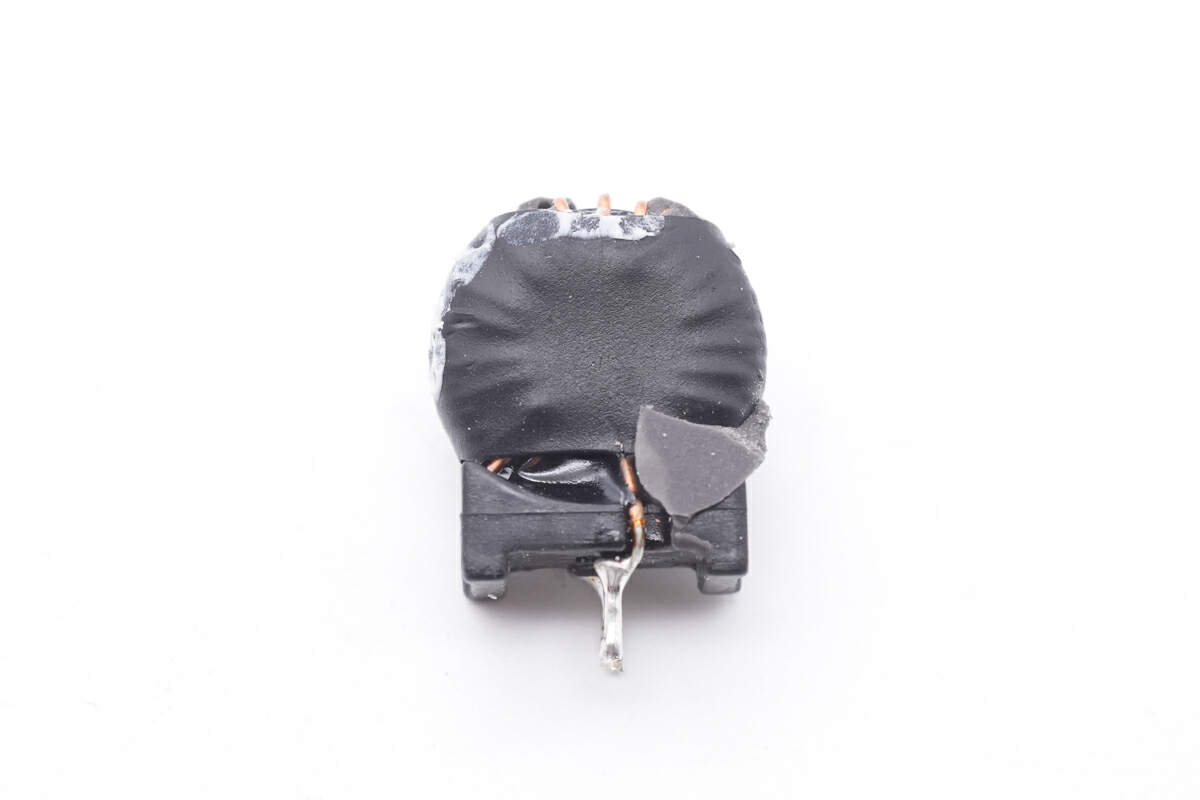
The differential mode choke is insulated with heat-shrinkable tubing.
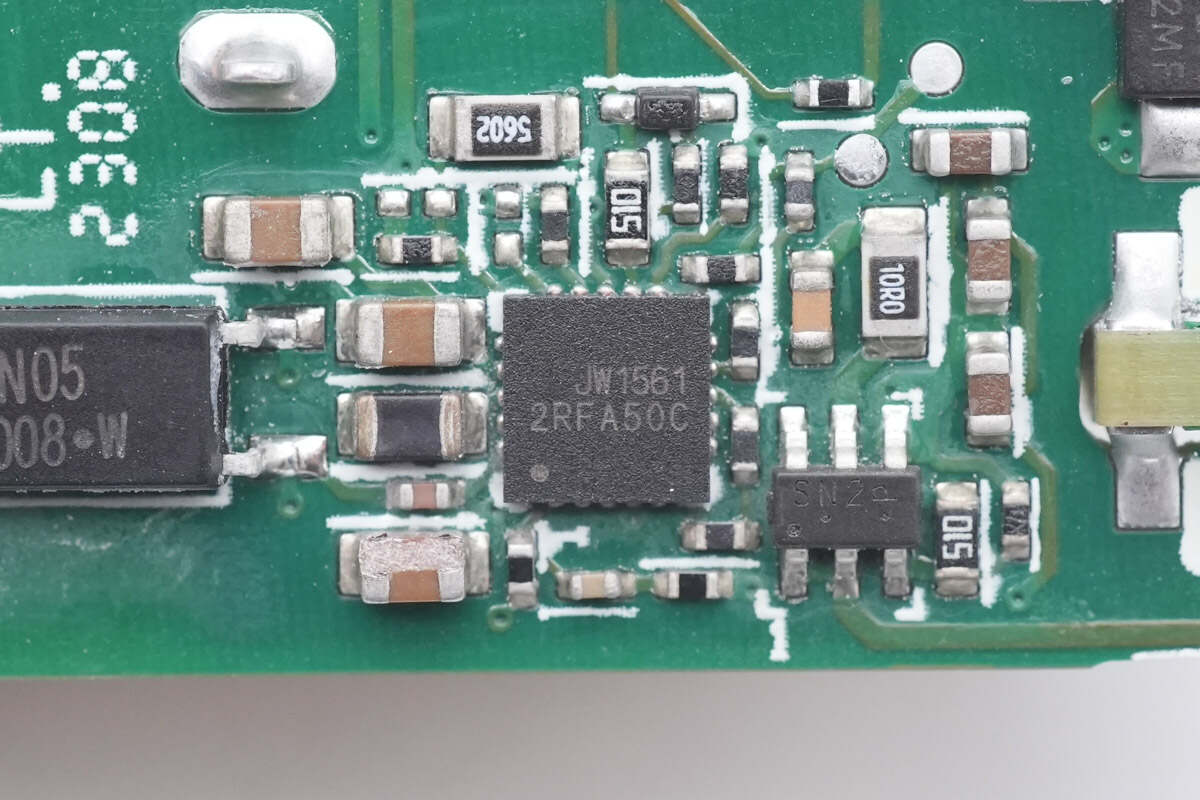
The primary controller is marked with JW1561.
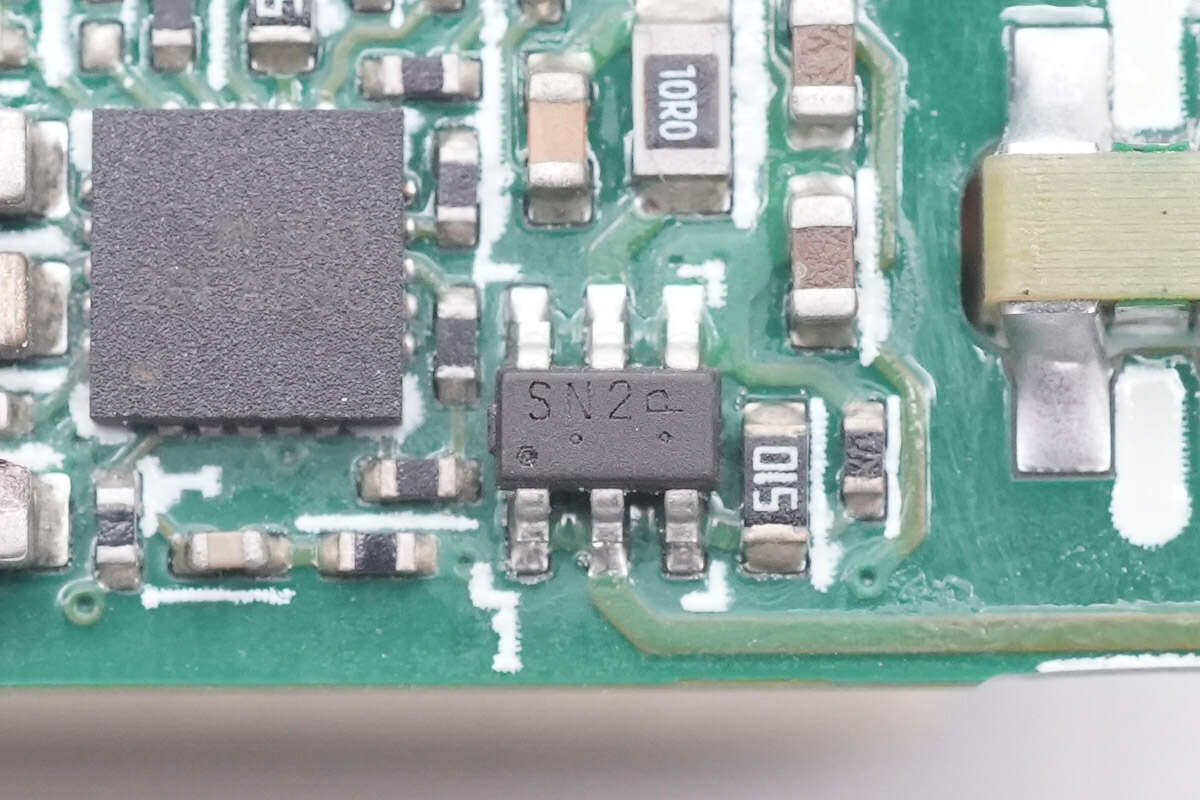
And a MOSFET marked with SN2 is next to it.
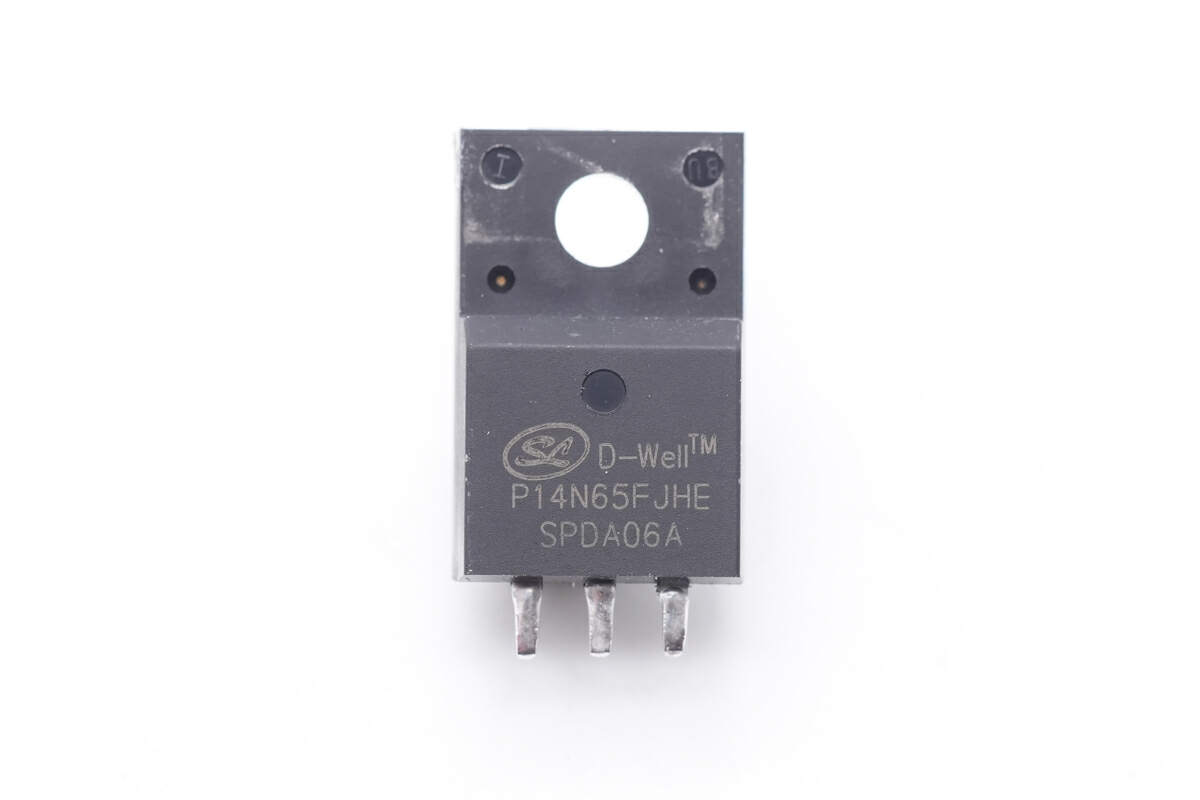
The primary MOSFET is from Silan, model SVSP14N65FJHE2, which adopts TO220F package. 650V 260mΩ.
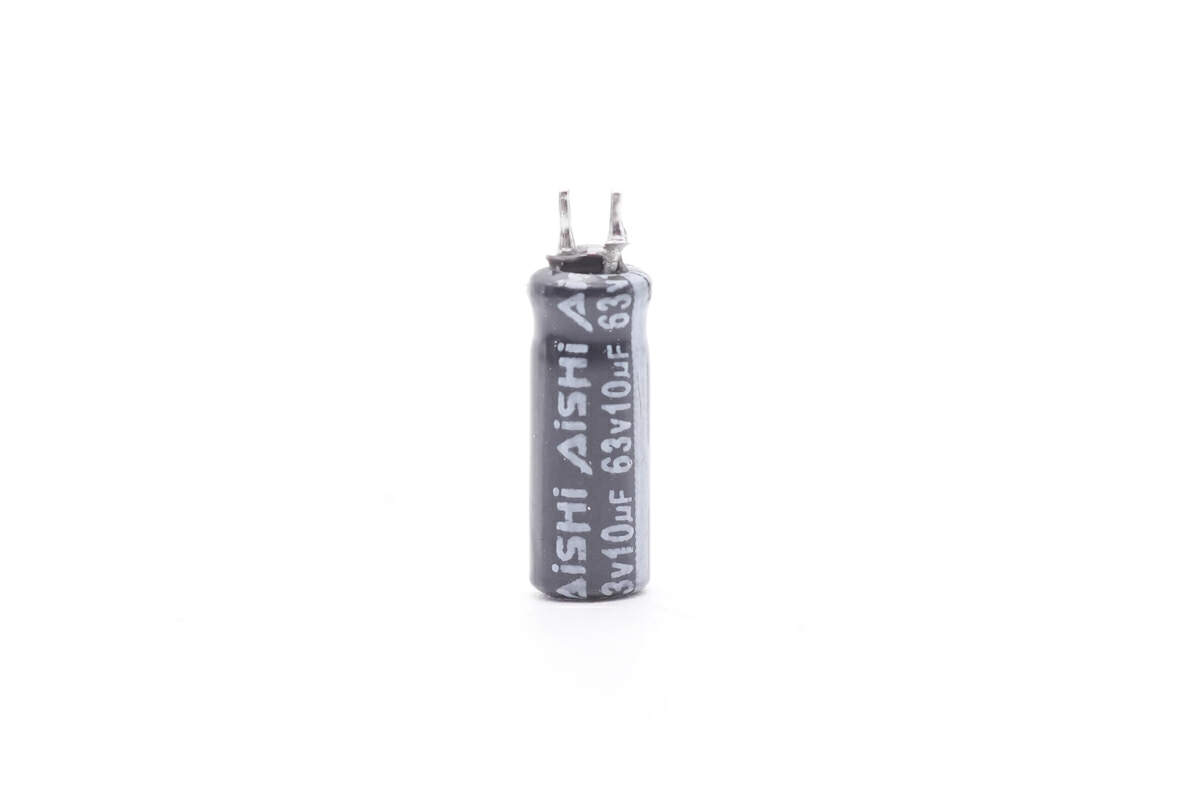
This thin capacitor can power the primary controller. 63V 10μF.
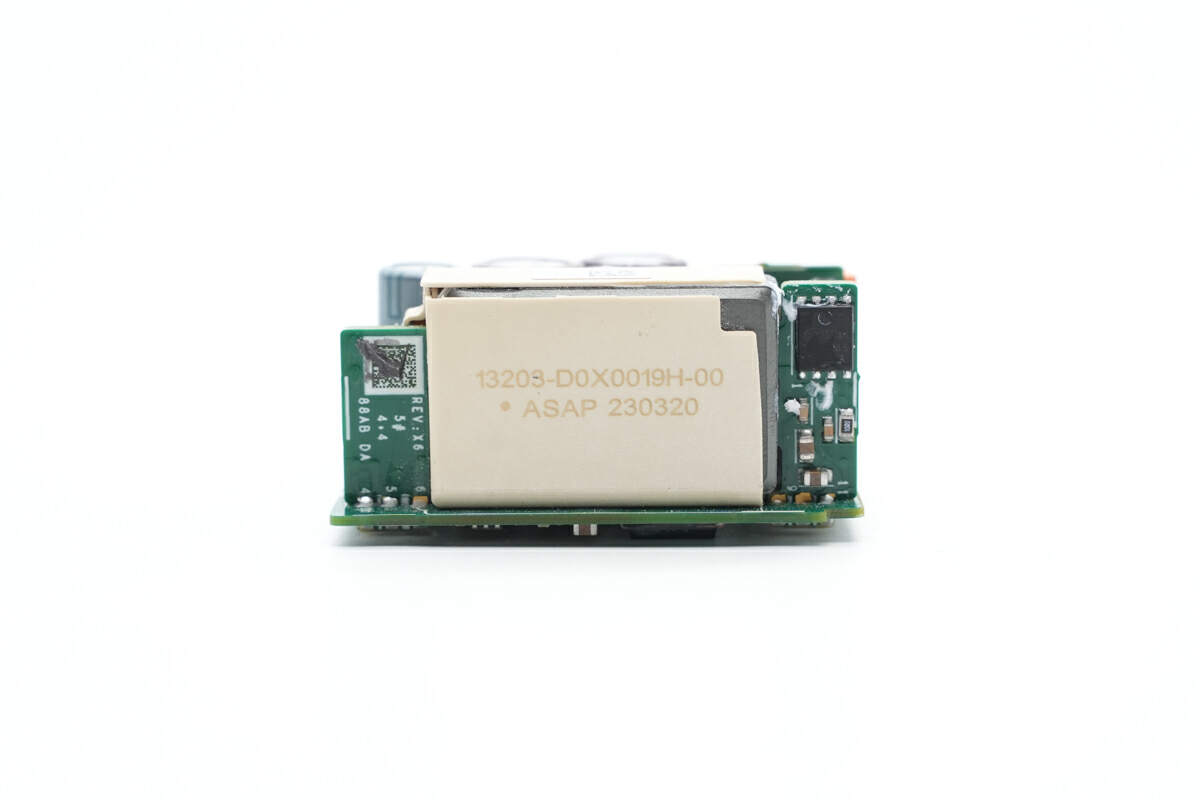
The planar transformer is soldered on the side.
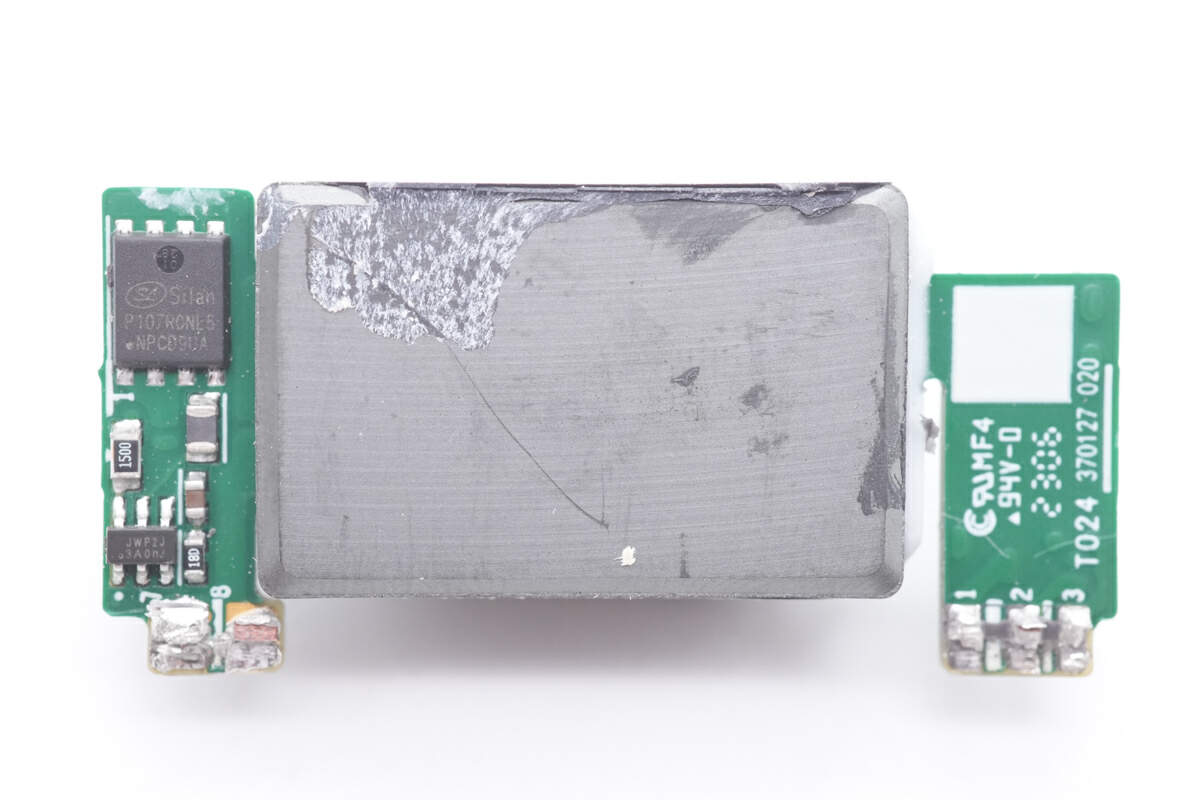
The synchronous rectifier controller and synchronous rectifier itself are soldered on the PCB of the planar transformer.
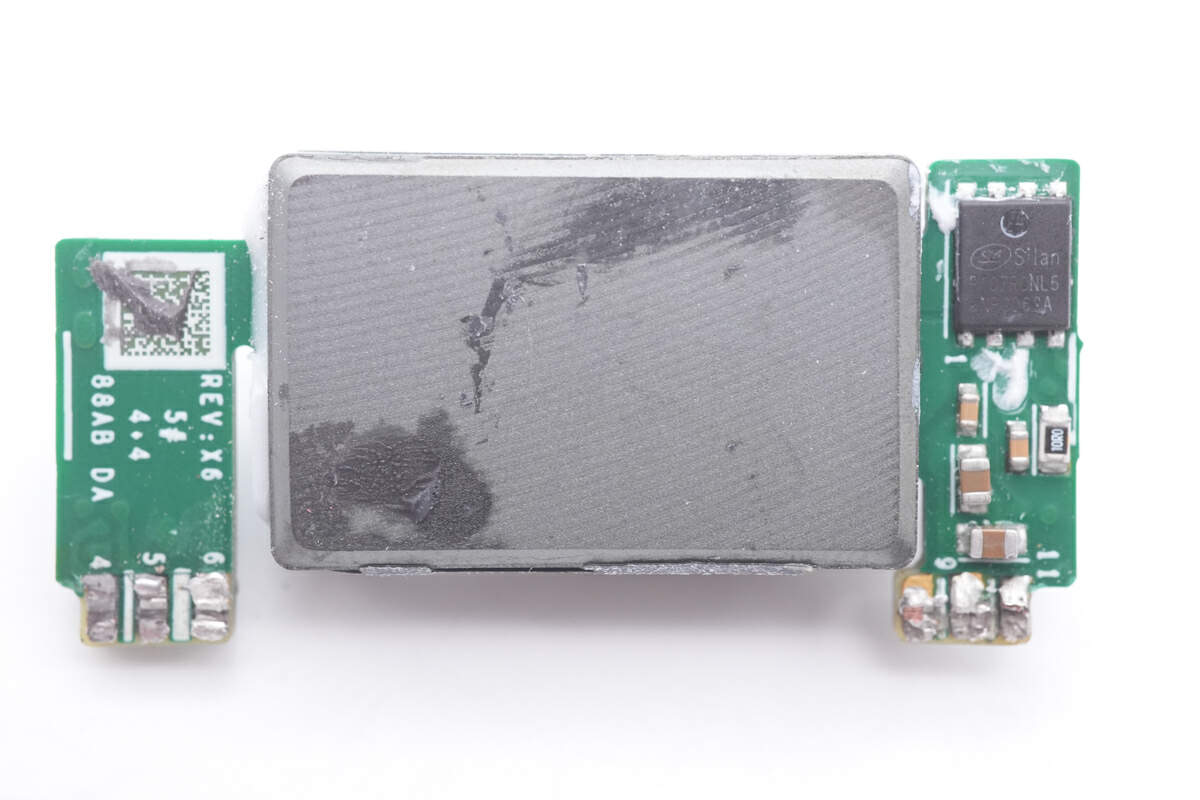
And there is another synchronous rectifier on the back.
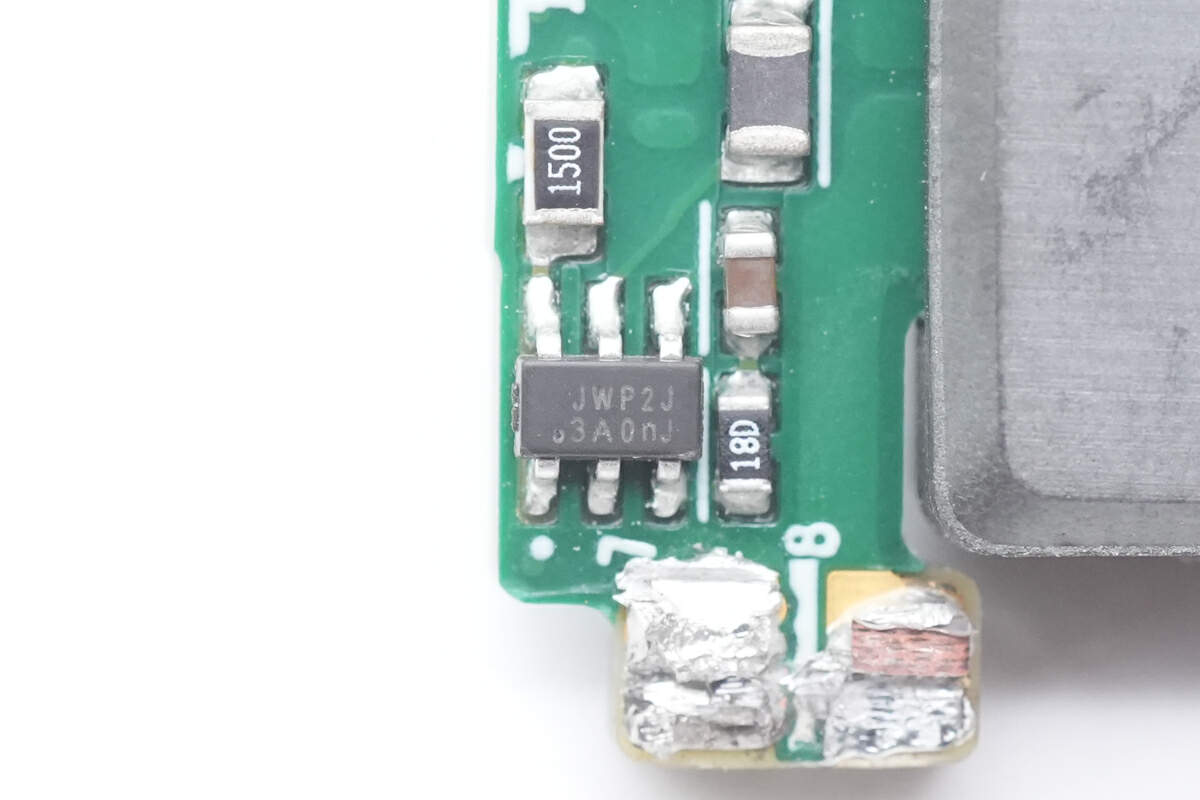
The synchronous rectifier controller is marked with JWP2J.
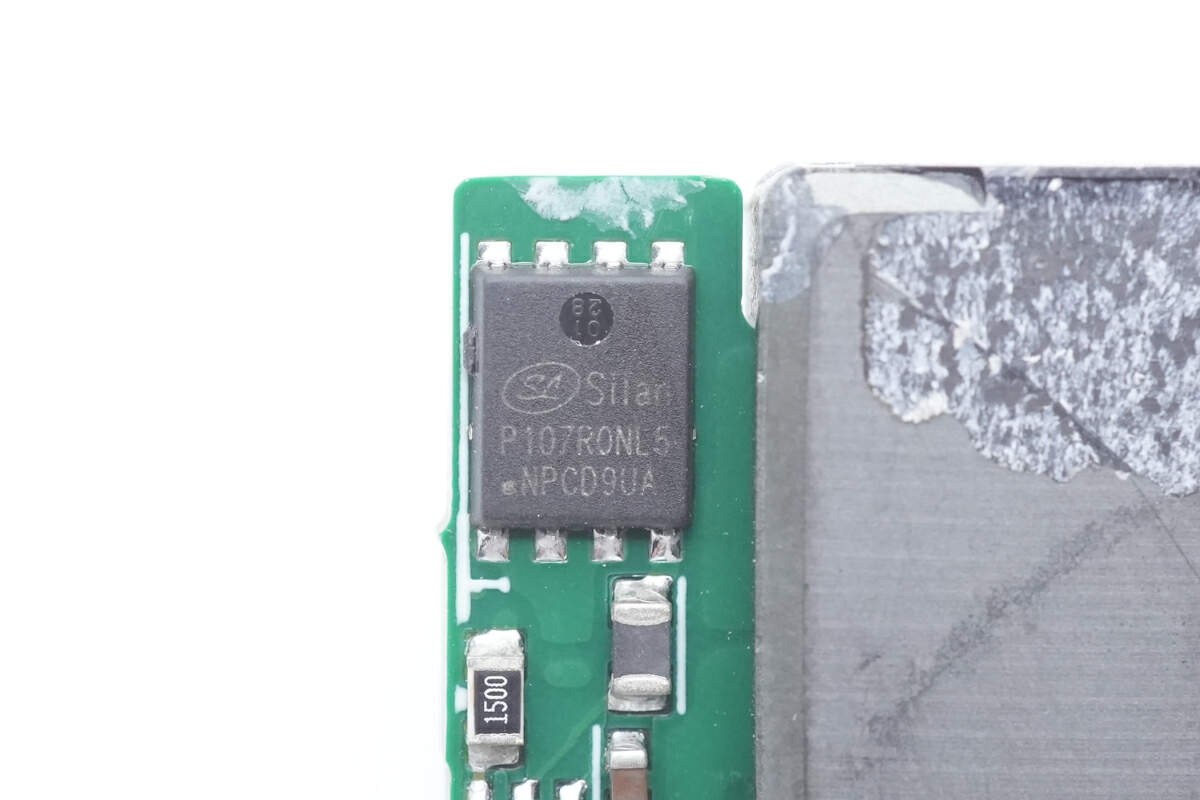
The synchronous rectifier is also from Silan, model SVGP107R0NL5, and adopts PDFN-8-5*6 package.
100V 7mΩ.
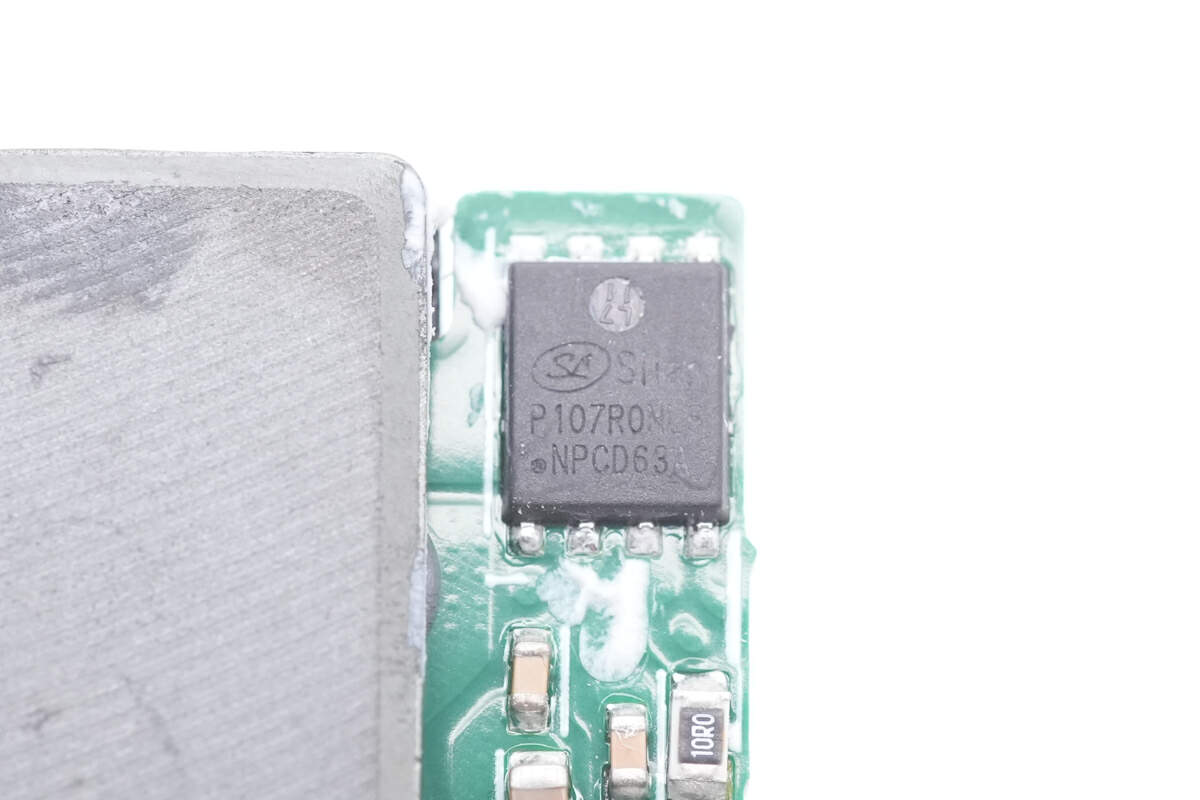
Another same MOSFET is on the opposite side.
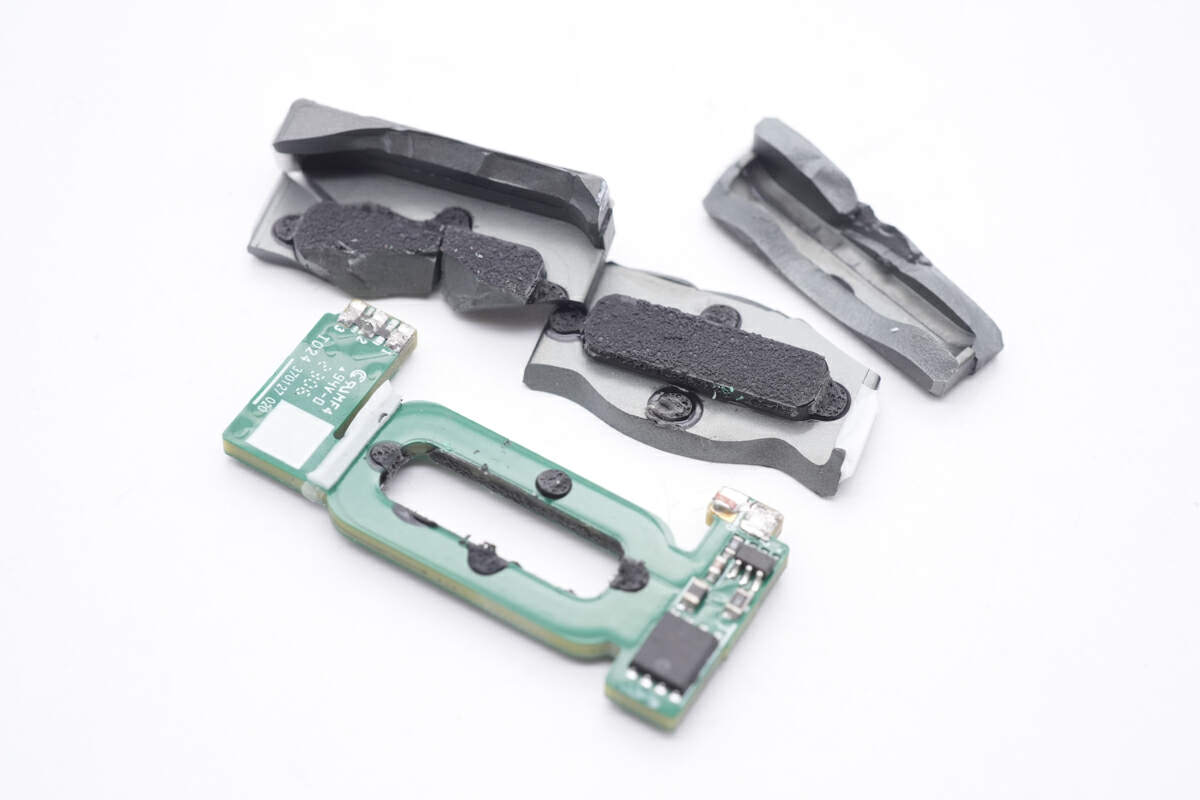
Smash the planar transformer's ferrite core, which consists of two pieces.
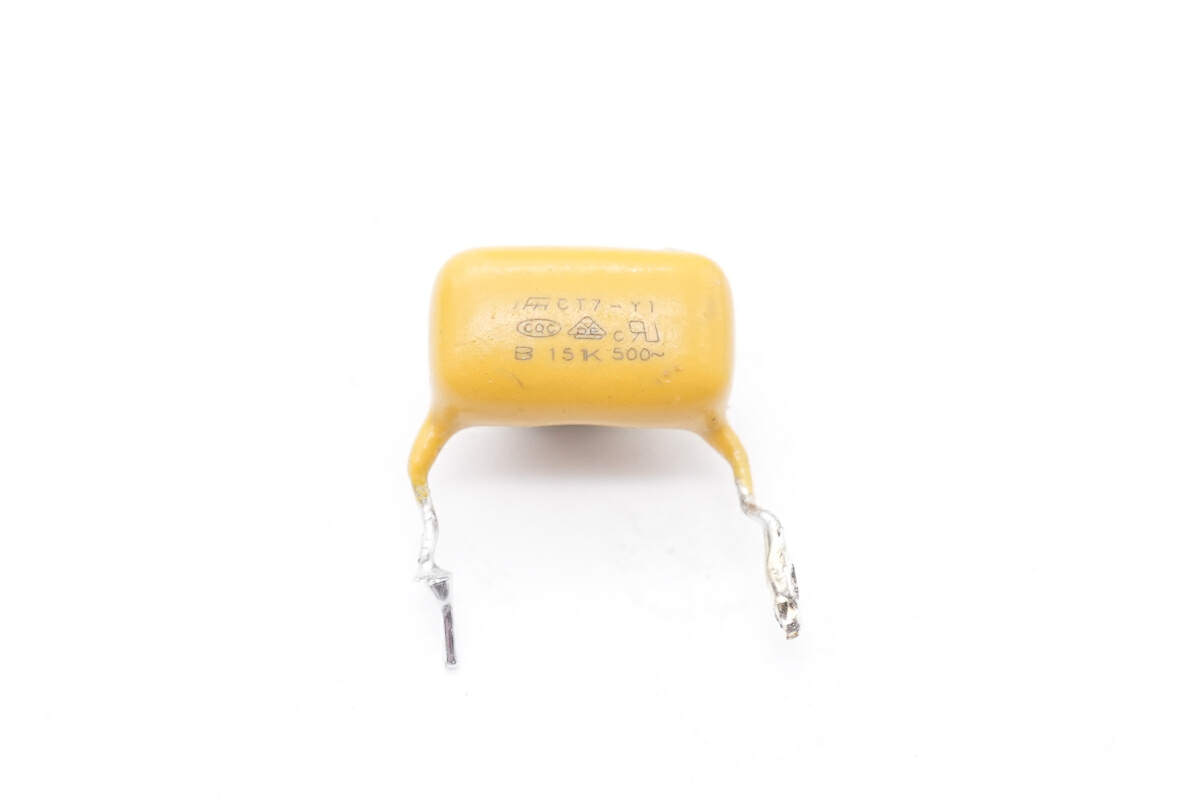
The safety Y capacitor is from Fenghua CT7 series. It's connected in series and adopts a rare yellow resin package.
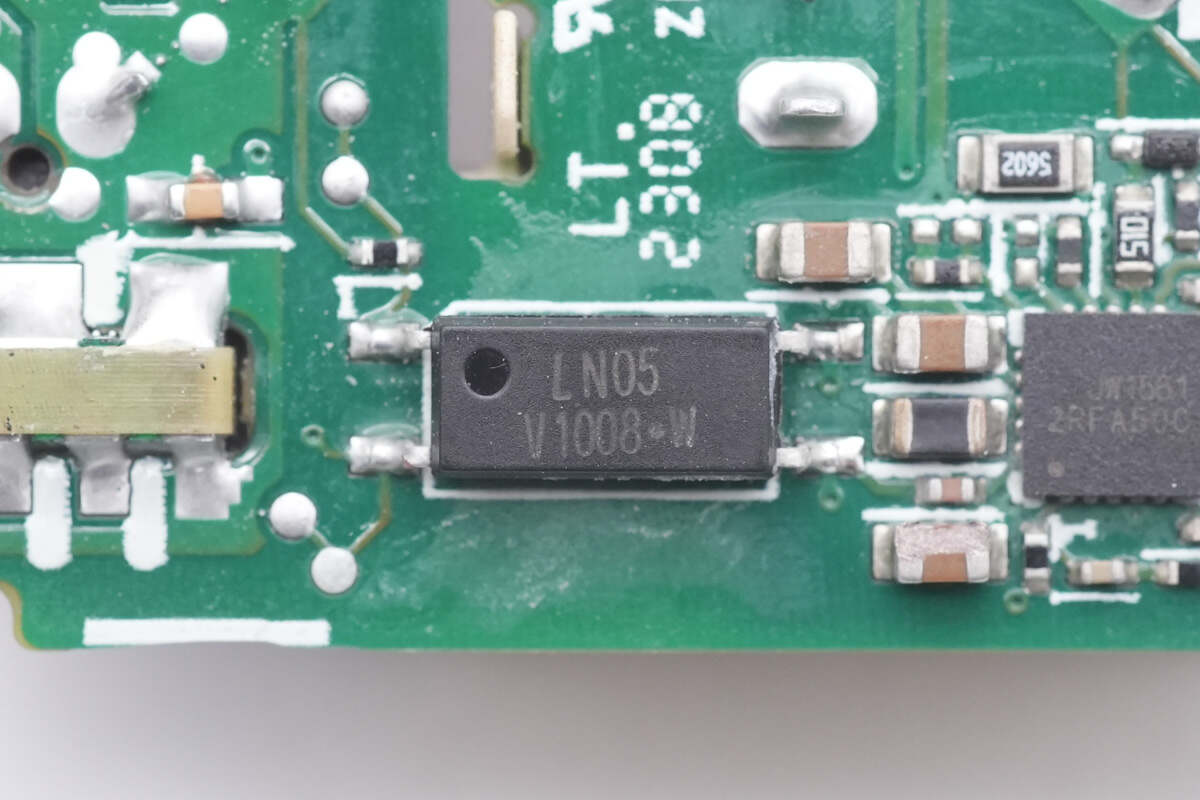
This 1008 optocoupler is used to regulate the output voltage through the protocol chip.
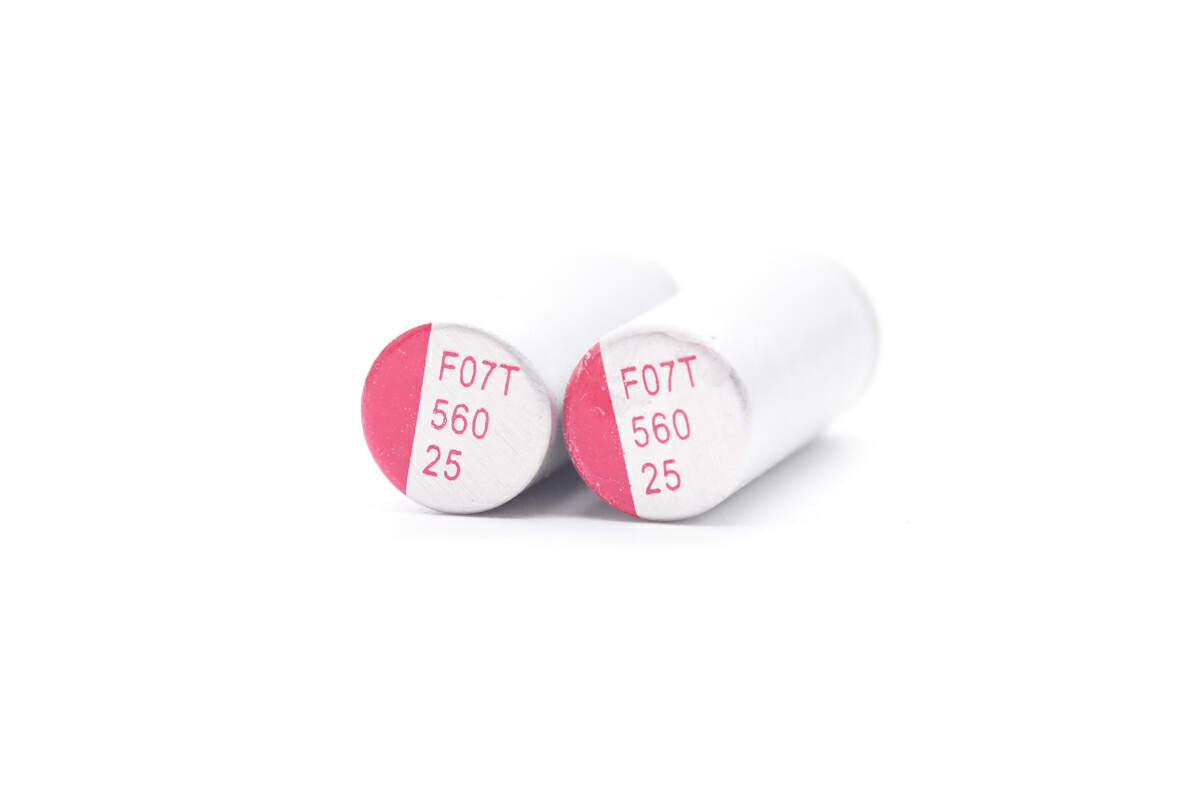
Those two solid capacitors for output filtering are 560μF 25V.
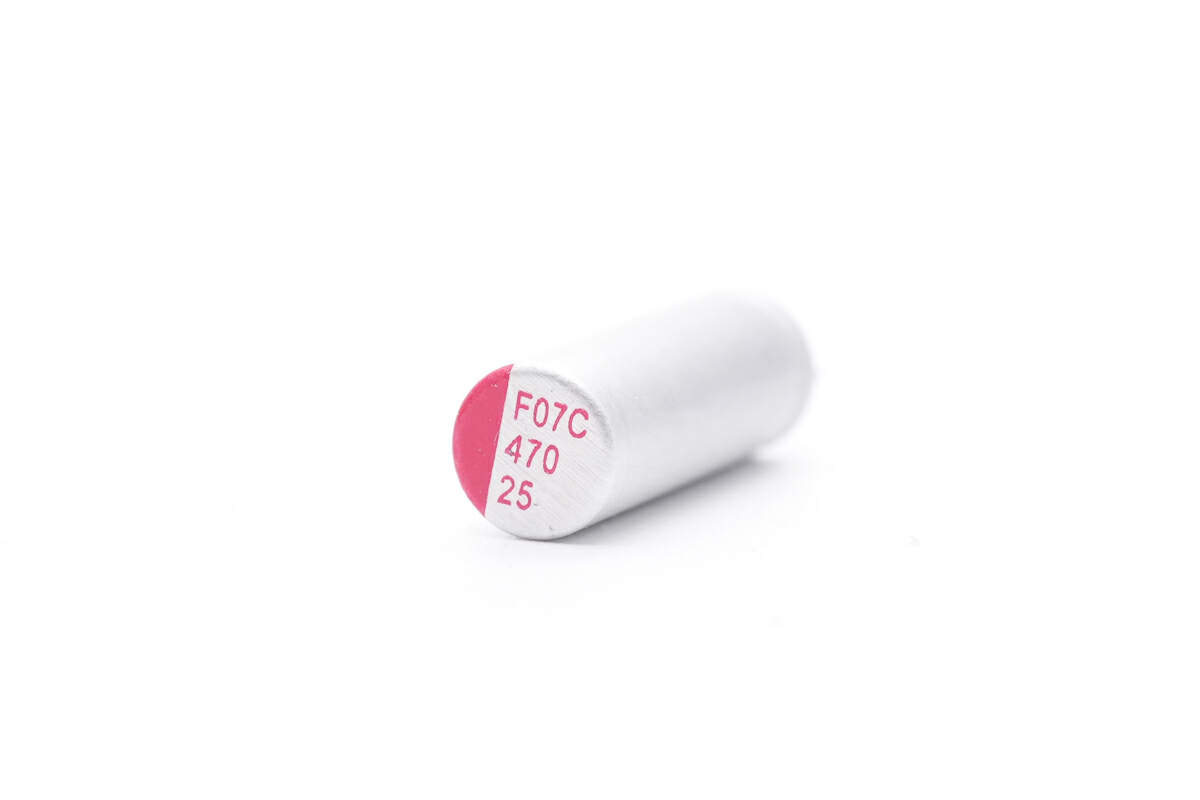
Another smaller one is 470μF 25V.
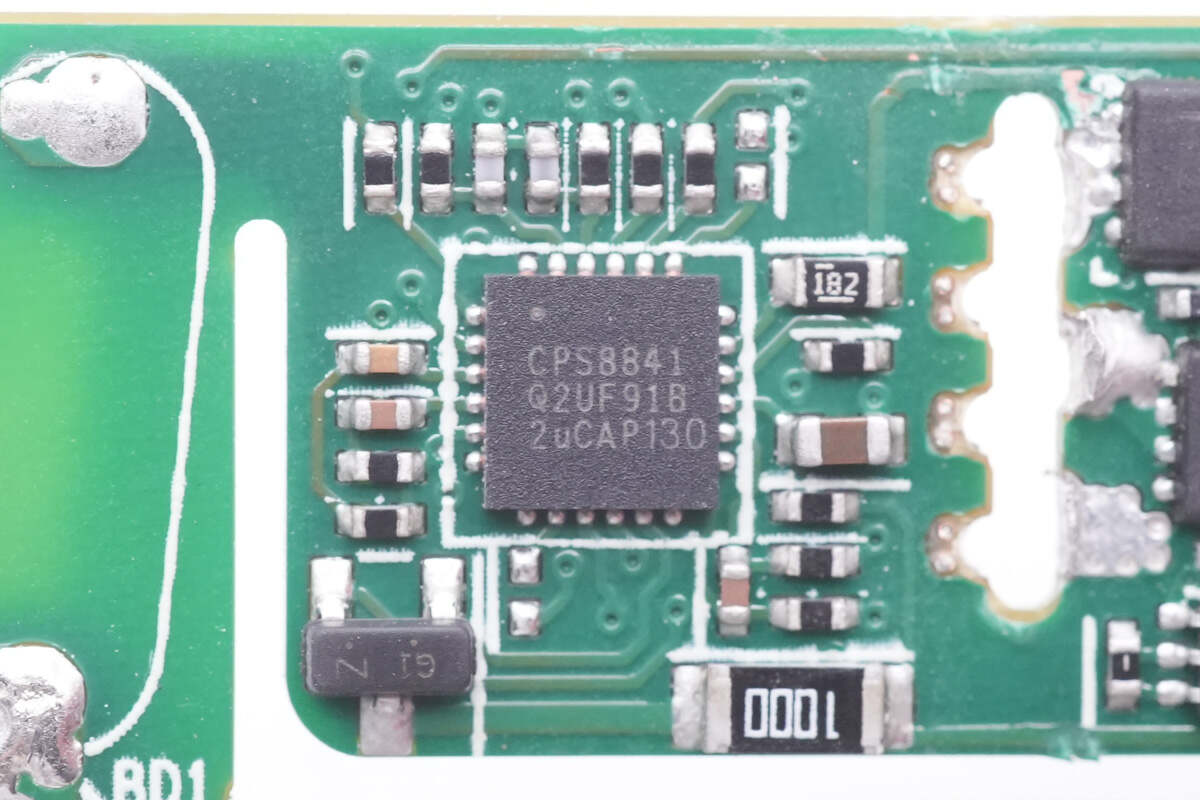
The protocol chip is from Convenient Power, model CPS8841, which is a highly integrated USB PD3.0 controller with Programmable Supply (PPS). It also supports multiple fast charging protocols such as BC1.2, QC2.0, QC3.0, SCP, UFCS etc. The chip integrates constant-voltage loop (CV) and constant-current loop (CC), contains I2C master/slave interface, and the addition of three GPIO pins makes it more flexible to use.
The CPS8841 also adopts QFN 4 x 4 package, supports input power of 3-22V, VCONN power supply and E-Marker detection, It also supports cable drop compensation, integrates NMOS driver, and can use NMOS as VBUS MOSFET. The chip has built-in programmable overvoltage, overcurrent and overheat protection, etc., with comprehensive functions.
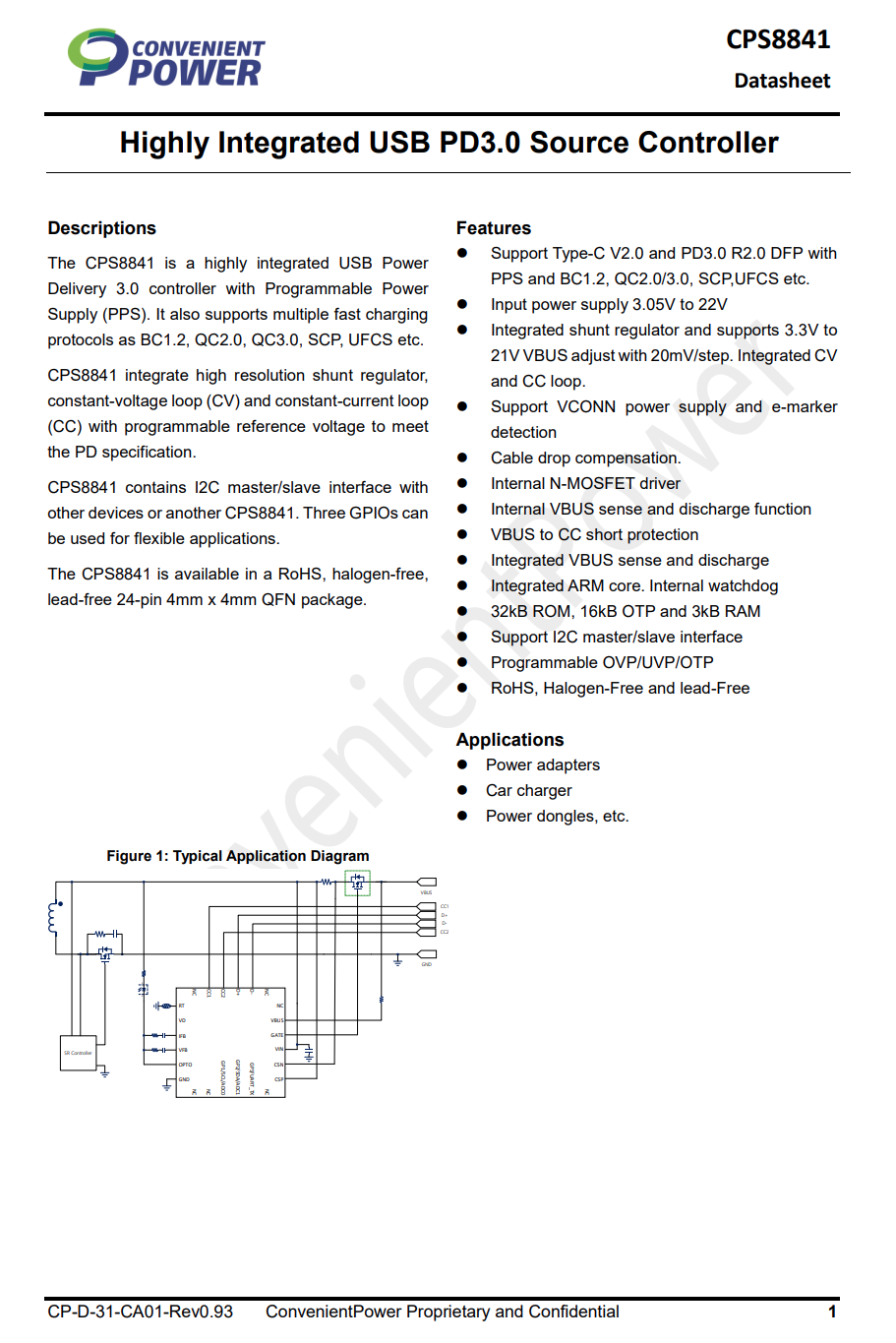
Here is all the information about Convenient Power CPS8841.
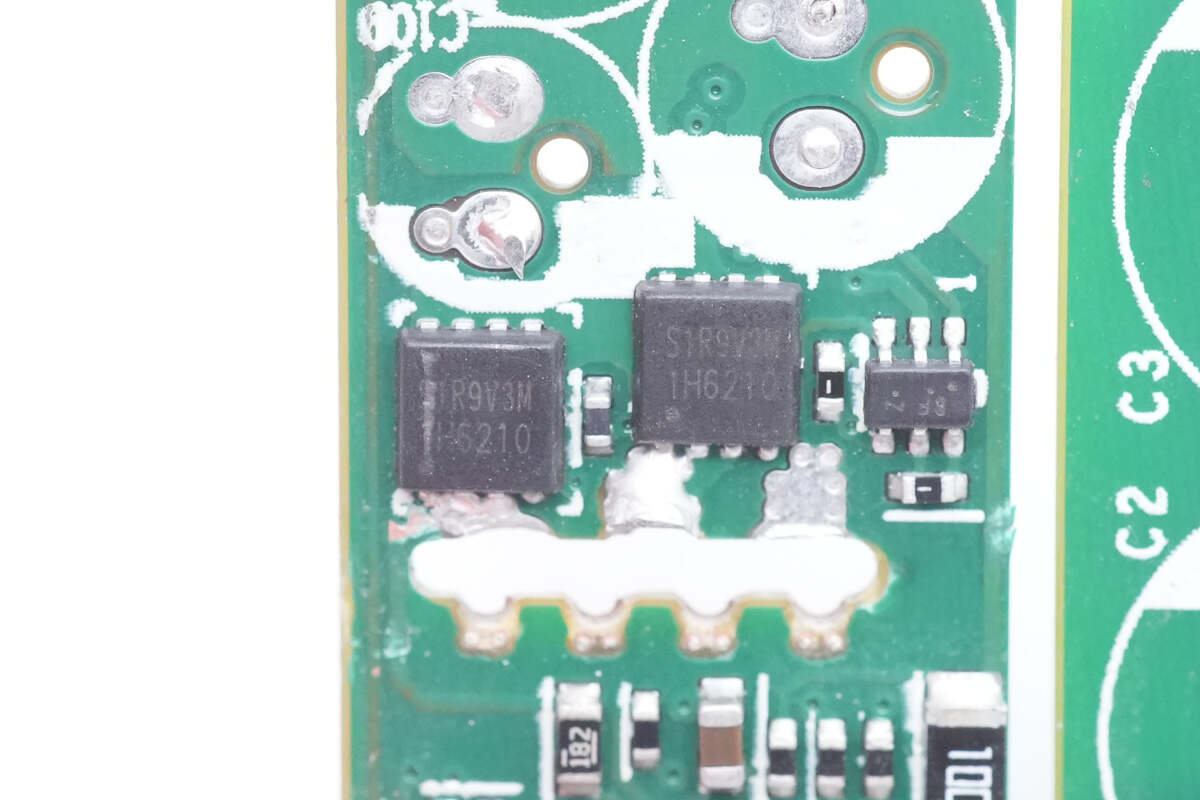
Those two VBUS MOSFETs are used to control the USB-A and USB-C port, respectively.
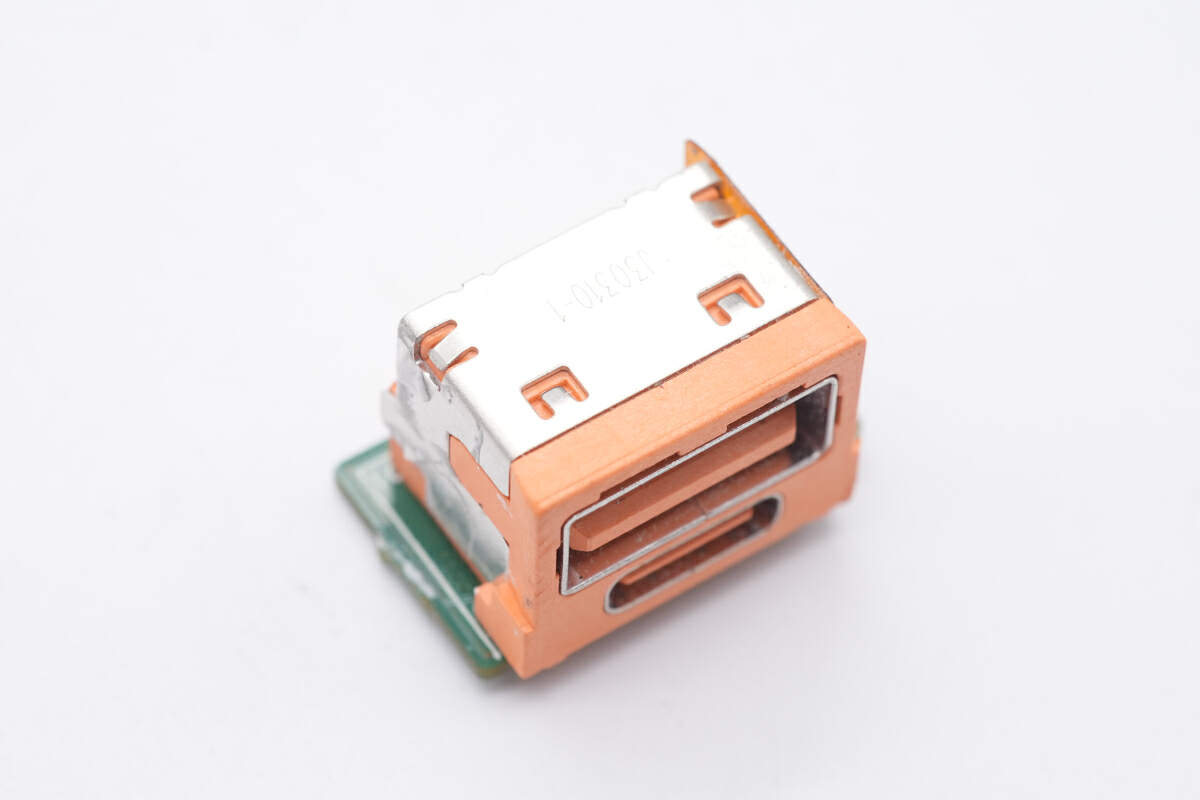
The connector is reinforced with metal sheet.
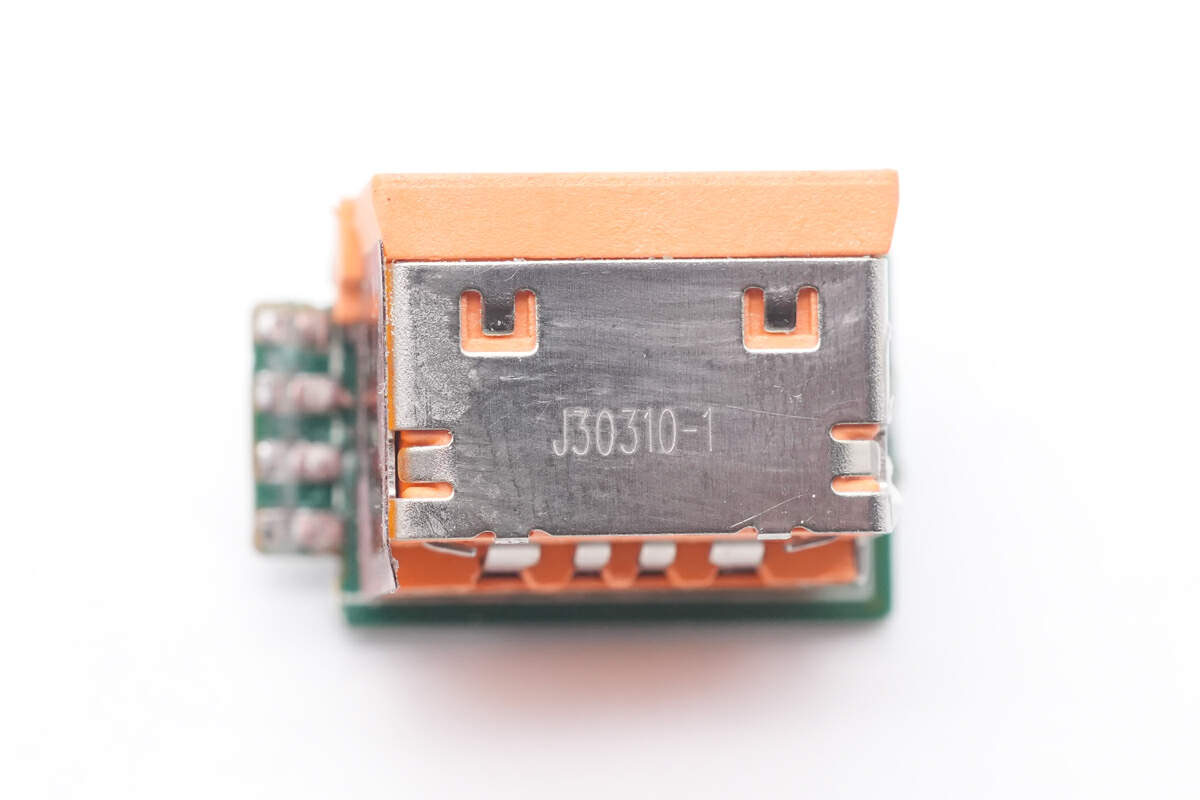
And it's marked with J30310-1.
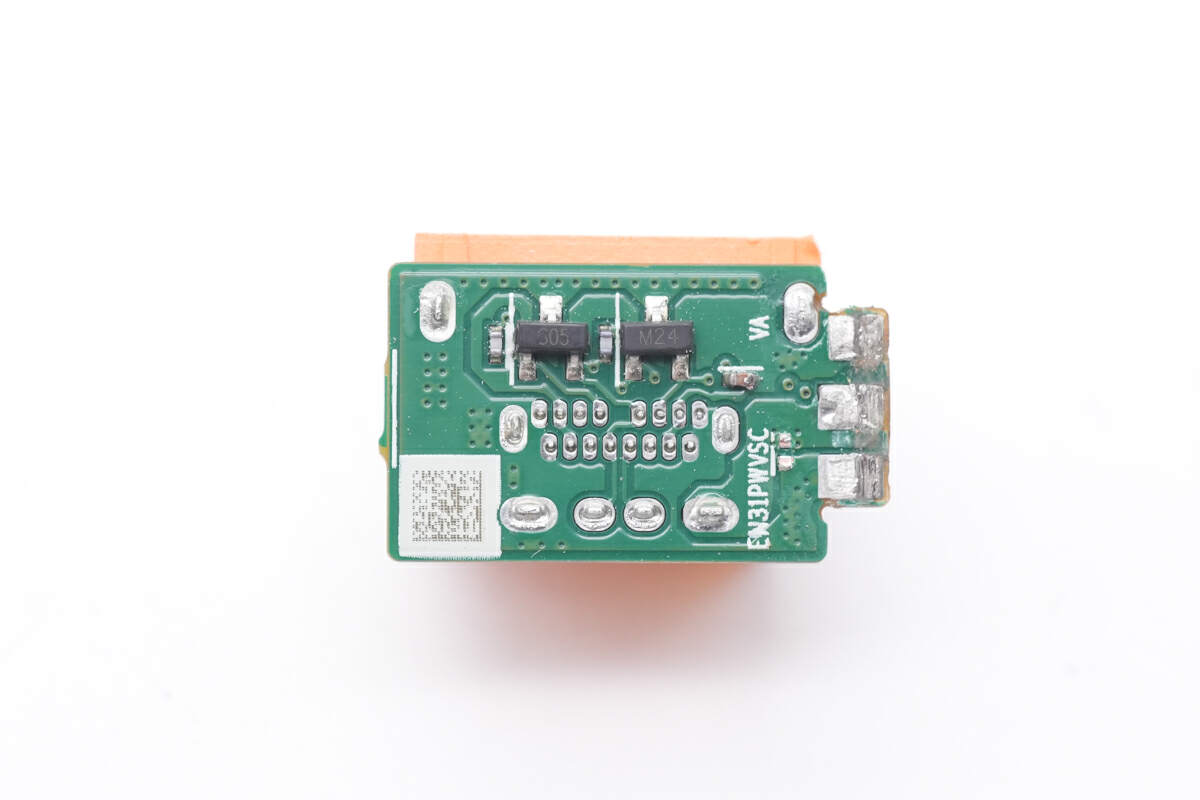
The TVS is soldered on the back for electrostatic protection.
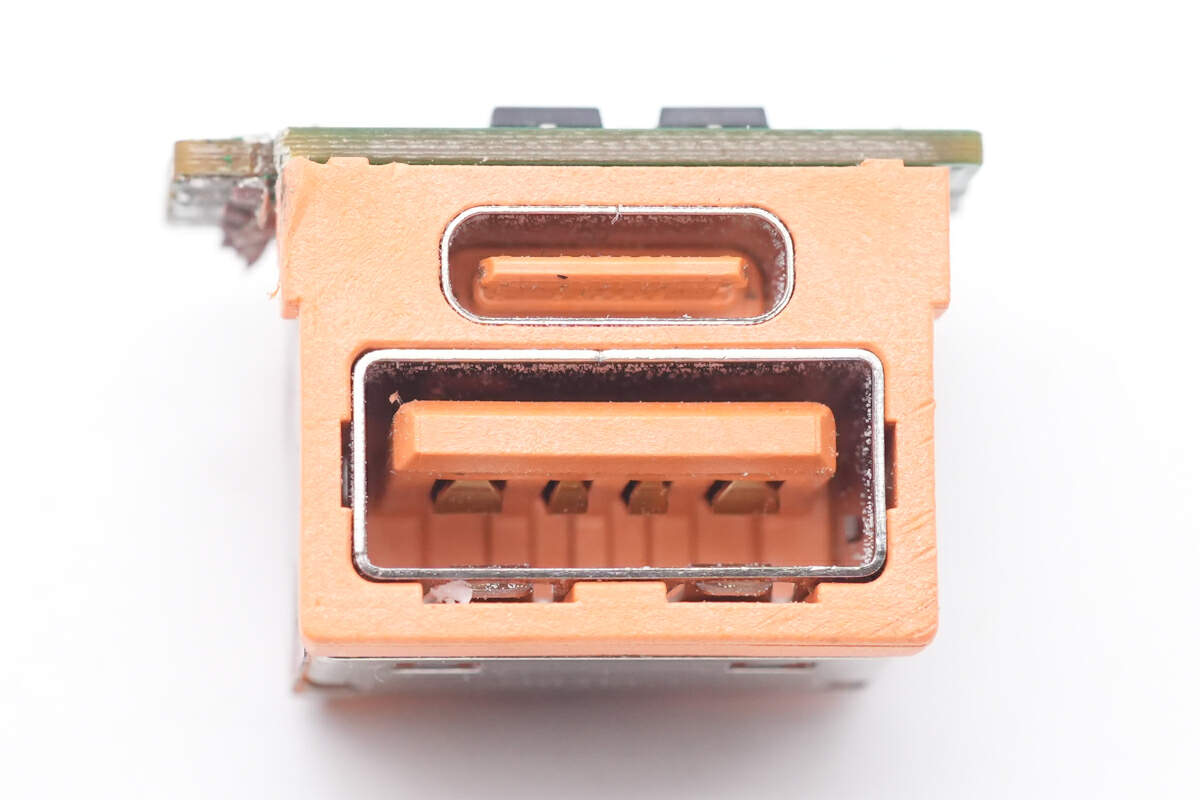
It looks like you can use both ports at the same time, but even if you insert two cables into two USB ports, only one will work.
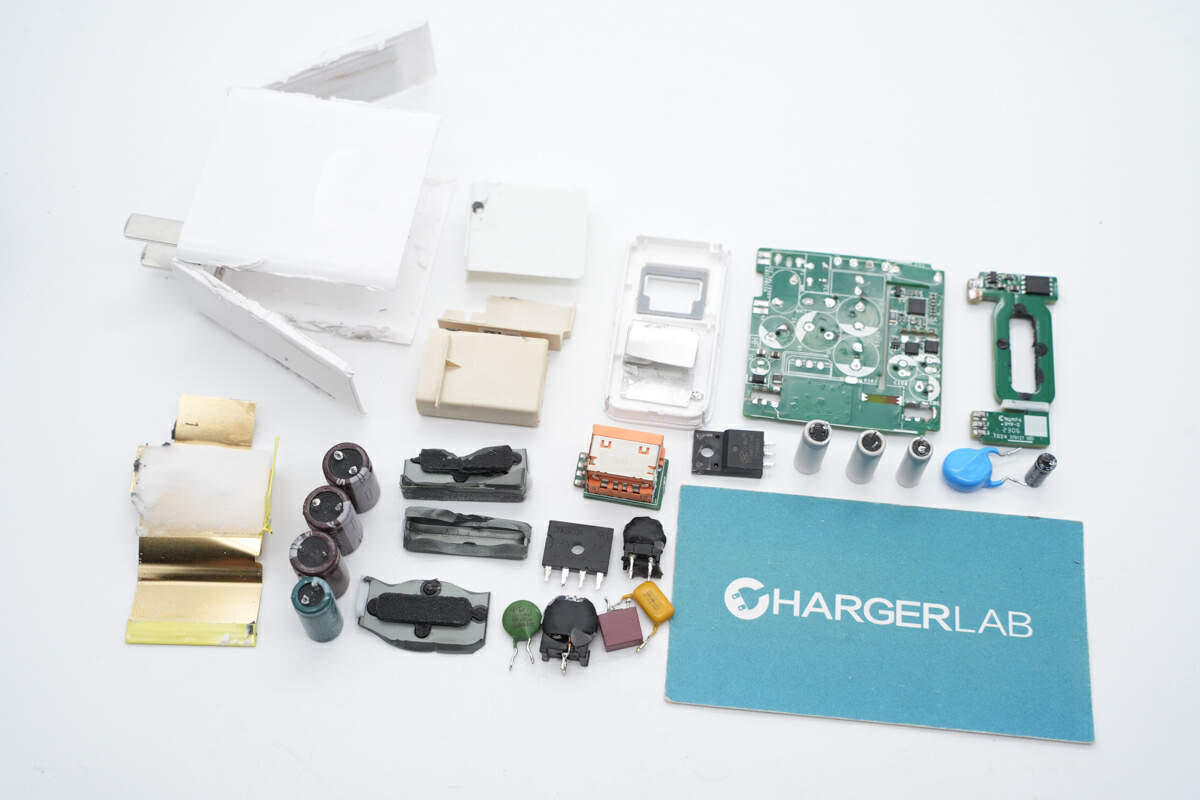
One last look at all the components of this Huawei 88W 2-in-1 Charger.
Summary of ChargerLAB
The Huawei 88W 2-in-1 Charger has a fusion port design, which can provide 88W private protocol fast charging and 65W PD fast charging, meeting the fast charging needs of Huawei smartphones and laptops. It also has PPS fast charging output, which can meet fast charging needs of other brands of Android phones. According to the ChargerLAB POWER-Z KM003C, this charger also supports 88W UFCS fast charging and is quite compatible.
After taking it apart, we found the internal structure is quite neat and compact, not only does the physical port limit the simultaneous charging of two devices, but the internal chip design also determines this is absolutely impossible.
Related Articles:
1. Teardown of Huawei 90W GaN Charger (For MateBook 14s)
2. The Platinum Standard | Huawei P60 Series Launch Event
3. Fusion Port Design | Huawei Launched 88W 2-in-1 Charger

